Brave (PG)
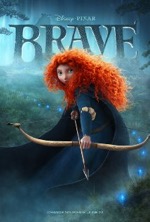
Starring: Kelly Macdonald
June 2012
Pixar’s thirteenth film, Brave, is a bold departure from the studio’s last couple of releases, both of which were sequels and featured the exploits of toys and cars, respectively. Brave has pioneered a few firsts for the stalwart studio: somewhat surprisingly, this is the first period piece produced by the studio. The movie is set several centuries ago in the Scottish Highlands. Brave is also Pixar’s first fairy tale, told in a conspicuously classic Disney manner. Brenda Chapman is the first female director of a Pixar film. Most importantly for those who’ve been critical of the studio’s purportedly misogynistic or chauvinistic tendencies, the film features the first female title character in any Pixar film.
Some will argue that Brave is Pixar’s answer to DreamWorks’ How To Train Your Dragon (2010), but the two animated films are vastly different. For starters, there aren’t any colossal, reptilian fire-breathers in Brave. Secondly, in Dragon young lad Berk seeks approval from his father while Brave’s Merida pulls out her long, thick, red hair in defiance of her overbearing mother’s insistence on her adherence to decorum and tradition. Ultimately, Brave has more in common with early Disney animated movies than it does with DreamWorks’ foray into Medieval times, particularly any Disney classic that features an old, wart-nosed, spell-casting witch.
Less obvious is Brave’s commonality with Disney’s Brother Bear (2003), specifically in the way the spell transforms effected characters. Another element borrowed from the Disney back catalog is the archery contest first seen in Robin Hood (1973). In that movie, archers competed for a kiss from the fair Maid Marian, but in Brave, contestants are vying for Merida’s hand in marriage (until Merida pulls out her bow and shows them all how it’s done). Of course, a young lass with a bow and arrow isn’t exactly original either…Susan was a fair shot in the Narnia films and, more recently, Katniss was deadly accurate in The Hunger Games (2012). Although Merida and her mother don’t switch bodies, the way the women eventually come around to the other’s point of view definitely has shades of Freaky Friday (1976, 2003). You could also say that firelocks and the three little bears steal the show at the end, yet another allusion to a literary antecedent.
All of this to say that Brave certainly isn’t the most original of the Pixar films. However, the studio’s ability to weave these familiar story threads into an intricate tapestry of high-spirited, hilarious and heartfelt moments is really quite astounding…you might even say uncanny. And there can be no doubt that like the many early Disney animated features it emulates, Brave is brimming with that elusive quotient called movie magic.
Other than the witch’s spell, the most magical element in the movie is the tiny blue sprites called wisps. Besides looking and sounding cool, wisps are like mini spirit guides that lay out a course for the characters to follow, much like breadcrumbs in the Hansel and Gretel fairy tale. The tribute to Steve Jobs, as his wisp ascends heavenward, during the end credits is a class move by the studio who owes the departed visionary a huge debt, both creatively and financially.
Though Brave probably won’t go down as essential Pixar viewing, it succeeds on its own right and has blazed new trails for the studio. Whether or not Brave is your cauldron of brew, you’re sure to find it a significant improvement over last year’s stuck-in-neutral Cars 2. The studio is back on track.
Rating: 3
Prometheus (R)
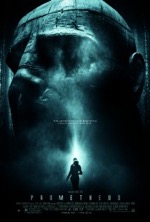
Starring: Noomi Rapace
June 2012
The opening sequence of Ridley Scott’s highly anticipated Alien prequel, Prometheus, is, perhaps, the most startlingly original teaser in the history of sci-fi films. An albino humanoid stands near a mountain stream, drinks some strange viscous concoction and begins retching. The sequence simultaneously begs a host of questions. Who is this strange-looking alien? Where does he come from? Is he on Earth of the distant past or future or some planet that looks just like the Scottish Highlands? And just what exactly is that disgusting grog the guy drinks (bad Romulan Ale)?
These questions are just the tip of the proverbial iceberg in an intentionally murky movie that will probably leave many audience members feeling lost. It seems fitting, then, that one of the film’s script writers is Damon Lindelof, co-creator of TVs critically acclaimed Lost, which was also a mythology heavy, mind-bending slice of top shelf sci-fi. Ironically, Prometheus’ opening sequence is a microcosm of the entire film: beautifully crafted and filmed, yet frustratingly cryptic.
By now, the Alien universe has been so well established (themes, iconography, etc.) that innovation is hard to come by. Many of the film’s new elements work just fine, but old patterns are hard to break and creep in as if on cue. Case in point, no Alien movie would be complete without a decapitated android and here that bill is filled by Michael Fassbender’s eerily serene David, who pops his top late in the film. A narrative mainstay in many Alien films is the lead female being impregnated by an alien; in this instance the hapless heroine is Noomi Rapace’s Elizabeth Shaw. Here, Shaw uses laser scalpels and other hi-tech medical instruments to abort the alien fetus from her own distended belly…easily the most creep-tastic sequence in the film, doubly so for men I’ll wager.
Another cliché: dumb characters don’t stand a chance when the bloodletting begins. Not only are these engineers more doltish than the typical scientists, they can’t regulate the impulse to touch items that can potentially destroy them once inside the alien structure—even when the impending danger is clearly pointed out to them they’re still powerless to resist handling foreign objects. I guess scientists and engineers will always be kids in a candy store whenever alien artifacts and technology are present.
When it becomes obvious after the initial round of introductions which person will be the first victim you know your story is a tad too predictable, and Prometheus certainly doesn’t break that mold. Sad thing is, we really don’t care when these ancillary characters die because, as with Star Trek’s “redshirts,” we don’t know the first thing about them…they’re disposable to us and the story. If there hasn’t been any investment in character development, why should we care if they die? We don’t, and that’s the point.
If there’s one area of the narrative that invites scathing criticism it’s the frequent trips to the alien fortress. After loosing all of their engineers on their first foray, what would induce the remaining characters to go back for a repeat visit? Curiosity? Stupidity? Pressure from the filmmaker who only has half a film at this point and needs a higher body count to earn an R rating? But they do go back, again and again...like lambs to the slaughter. And people keep dying. At some point you’d think the characters would figure out that the alien haystack isn’t the Matterhorn ride at Disneyland.
Worse than the frequent trips to the alien slaughterhouse is that we’re taken along for the ride each time and always from a low angle perspective of the tire rim or a helicopter shot of the motorcade approaching the alien structure. These exterior shots leave us feeling cold, effectively on the outside looking in. Why didn’t Scott utilize these segues to give us some good-natured banter among characters or little glimpses into the back stories of these individuals, a la the Humvee scene early in Iron Man (2008)? As is, these ping-pong ventures between the ship and alien fortress are squandered opportunities to shore up one of the film’s most sorely lacking commodities—character development.
Although the climactic ship collision/crash is visually spectacular, the resulting nonsense of characters trying to get out of its path could’ve been trimmed from the film with little consequence. It’s one thing if you’re Indiana Jones trying to outrun a steamrolling ball of death down a narrow tunnel, but it’s something entirely different if a ship is falling in your direction and you’re in the middle of an expansive plain. This type of imperilment is common in movies and I always end up asking myself, do characters not realize they can run to one side or the other to avoid what’s rolling/moving straight toward them? Why must they run in a straight line in an effort to outrun the object of impending danger? It must be plain idiocy and an utter lack of knowledge regarding the laws of physics and gravity that drives these characters’ actions. Even more egregious is the amount of screen time dedicated to this ostensibly thrilling sequence which fails to advance the plot in any significant way. The entire sequence is nothing more than a self-indulgent excuse to employ a massive set piece in order to generate a shallow thrill for the audience, something Michael Bay would normally do, not Ridley Scott.
In the final analysis, Prometheus will only be admired by those who enjoy a hard sci-fi yarn that grapples with the questions of existence, but ultimately fails to answer those questions in the end. Action junkies will be disappointed in the film as will those who’ve come to expect a certain amount of intensity and gore from the franchise. Though Scott’s original Alien (1979) did far more with a lot less, Prometheus is still a handsomely mounted, visually staggering film. As an art film under the guise of a commercial release Prometheus may, well…alienate a large portion of its audience.
Rating: 2 1/2
The Best Exotic Marigold Hotel (PG-13)
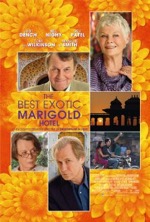
Starring: Judi Dench
May 2012
It’s been a knock on many modern movies that most of the best scenes/lines are spoiled in the trailer. So then, it was with natural skepticism and trepidation that I braced for the worst with The Best Exotic Marigold Hotel (based on the novel by Deborah Moggach), since so many memorable moments were featured in the trailer. Surely there wouldn’t be anything left to the story, right?
Despite predictable rom-com subplots and a straightforward narrative, the movie maintains interest throughout thanks to the breathtaking location work and spellbinding performances from the luminescent cast, headlined by Judi Dench, Tom Wilkinson, Bill Nighy and Maggie Smith. When his character is asked what he sees in India, Wilkinson replies, “The lights…the colors…the smiles.” Indeed, the locations, extras and overall ambience serve as a main character in the film. In reality, if this story had been set in NYC or even Paris it would have retained the much of the same dramatic punch, but it probably wouldn’t have had the same, well…exotic appeal. As they say in real estate, “location, location, location.”
The various character vignettes are all well written and acted, and director John Madden (not the football guy) wisely keeps fancy camera movements to a minimum so as not to upstage the gorgeous Indian vistas. These serialized subplots, which occasionally intersect with the main plot, effortlessly bounce from one set of characters to another and somehow manage to move the story along without coming off as a big screen soap opera. Though not overly complex and predictable throughout, Exotic is a life-affirming tale rich in character and beauty. The film’s underlying assertion that it’s never too late to embark on a new adventure should resonate with viewers of all ages. Just remember, “Everything will be alright in the end.”
Rating: 3
The Avengers (PG-13)
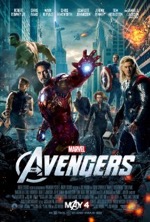
Starring: Robert Downey Jr.
May 2012
One of the most highly anticipated superhero movies to come along in quite some time, The Avengers is the culmination of years of setup: Marvel executives felt that the best way to ensure the success of an Avengers film was to produce individual movies for all of the main characters so that the audience would be familiar with their origin stories and wouldn’t be jumping into this new adventure cold...an enormous financial gamble with tremendous earning potential if the gamble paid off. Although timing was a major consideration for this film, the main concern was that of plotting—would an Avengers movie collapse under the weight (considerable in the Hulk’s case) of so many superheroes and their corresponding A-list stars? Most will applaud fan favorite writer/director Joss Whedon for pulling off the balancing act of the decade, and on the face of it they’d be right for feeling that kind of fierce pride over his achievement here. However, I feel Whedon’s juggling act works on one level while failing decisively on another…and it’s a big one. To use an analogy, however skillful the actual juggling is, using flaming torches is much more impressive than using, say, tissues. Although appearances would suggest that Whedon has given us the former, he’s actually cleverly foisted the latter upon his audience. Let me explain…
The “character moments” that serve as the ad hoc glue to hold all of the action sequences together (and from becoming one run-on melee) are extremely flimsy and don’t really tell us anything new about the characters: Bruce Banner/The Hulk (Mark Ruffalo) is angry all the time (not exactly a news flash), Thor (Chris Hemsworth) is still having troubles with his nefarious brother, Loki (old hat) and Hawkeye (Jeremy Renner) can shoot arrows with a degree of precision that would make LOTR’s Legolas jealous, but even after watching the film I have no idea what his character’s real name is. Captain America (Chris Evans) is adjusting to life in the 21st century, which is good for a few chortles, but his major character revelation is that back in the 40s his persona inspired a line of trading cards. A line early in the film suggests that Black Widow (Scarlett Johansson) isn’t just another pretty face, but that notion is belied by her lack of involvement in the plot, scant dialog and only her Sydney Bristow kickboxing skills to recommend her.
As for Tony Stark/Iron Man (Robert Downey Jr.), he verbally spars with Captain America, slugs it out with Thor, tries to rile Dr. Banner (without his suit on, which doesn’t seem very prudent) and schmoozes with Pepper Potts (Gwyneth Paltrow). Tony and Pepper officially got together at the end of Iron Man II (2010), but in this film, there’s the feeling that they’ve been dating for some time. In a film overstuffed with so many story lines, wouldn’t this subplot work better in the next Iron Man film, where it could be fleshed out in more detail? It’s ironic that some of the best “character” scenes in the movie are ones I feel would’ve had more impact elsewhere.
Stellan Skarsgard’s Prof. Selvig is relegated to a few lines of dialog, which is a big disappointment since a lot more could’ve been pulled out of the sensational actor. Even Samuel L. Jackson’s Nick Fury is sidelined during most of the movie’s action—it seems as if his function is to fret over the Earth’s plight while gently goading the hodgepodge of superheroes into forming a team that’s implied in the title and that the audience knows will coalesce at some point during the movie. In fact, this plot point exposes another narrative misfire: the group isn’t “officially” in place until nearly three quarters of the way through the film, which is a bit exhausting and belaboring for a story element that’s such a foregone conclusion.
One plot thread that does have some real-world relevance is Banner’s struggle to keep “the other guy” from emerging and making a mess of things. Banner’s admission that he’s angry all the time is tantamount to an individual in a recovery group admitting to being powerless over the compulsion to do the wrong thing. Instead of actively resisting his rage-a-holic tendencies, as Edward Norton’s Banner does at the end of The Incredible Hulk (2008), Ruffalo’s Banner fully embraces the reality of his weakness…and gains strength from such knowledge. There’s a powerful irony here. Even though these moments are fleeting (and constantly upstaged by the next wham bang action scene) there is some complexity here, which probably stands out as the zenith of character development in the film.
While on the subject of Banner/Hulk, some of the best scenes in the film come from the not-so-jolly green giant, like when he smashes skyscrapers or pounds Loki into the floor. It seems like Whedon has discovered the right look, tone and temperament for the character and it well may be that the Hulk is a situational hero rather than one that can headline an entire movie (judging from Hulk’s forgettable films released during the previous decade). But for all of the memorable moments provided by the character, some of the film’s most glaring plot holes center on the Hulk’s destructive tendencies. When Banner finally transforms into the Hulk—disappointingly halfway through the film—he recklessly chases Black Widow through the cramped corridors on the hover carrier. The Hulk indiscriminately busts everything in his path and most of it (pipes, cables, etc) looks vital to the smooth operations of the vessel.
The Hulk’s rampage through the ship would seem to undermine Iron Man’s efforts to repair the plummeting craft. Miraculously, as soon as the team has been “officially” christened, the Hulk gets along with Widow and everyone else on the team, as observed in the faux photo op of the group standing defiantly and triumphantly over vanquished Loki. Perhaps these inconsistencies explain why none of the recent Hulk solo movies have been smash hits (sorry, couldn’t resist).
Although the sheer number of action sequences (there’s enough for three movies) undermine whatever plot can be deciphered here, the match-ups themselves are a bit obvious and formulaic. This crowded bought schedule results in too many showcase fights, i.e.: Thor fights Iron Man, Thor fights Loki, Hulk fights everyone, etc. Some of these confrontations feel terribly contrived. It’s as if Whedon and company said “let’s throw Thor against Iron Man and see what happens.” Granted, these episodic brawls are endemic to comic books, but they don’t seem to have translated too well to the big screen where the action scenes seem bloated, overstuffed and unnecessary in many instances.
Again, should some of these conflicts have been saved for the next film (and is there any doubt that there will be a sequel?). The climactic conflagration in downtown NYC is immaculately storyboarded and features some mind-blowing showdowns, many of them decentralized, which sets up some wonderfully rhythmic crosscutting. If there’s a downside here, the setting seems a bit passé for a final conflict (the location looks like it was borrowed from the old Avengers arcade game). Why not pick a less hackneyed setting for the movie’s battle royal? And in deference to 9-11, why not pick on a different city for a change?
Much of the excitement (hype) over the film is tied up in the luminous stars that populate the film, but an even bigger draw, it can be argued, is the assemblage of this super group. However, we’ve seen the team approach to “comic book” films before in the X-Men and Fantastic Four franchises. This begs the question of why this film has generated such enthusiasm from fans when the whole team thing has been done, with varying degrees of success, fairly recently? Are the characters here more powerful and more interesting than those in the other movie series’? Are the actors here better or more popular than those in the other films (well, maybe this film has an edge over the Fantastic Four films). The novelty of the team approach to superhero films has worn out by now, so the anticipation over this film must be linked to some other ineffable quotient of movie magic.
In the end, The Avengers is a surfeit of FX and a dearth of actual story. Whedon’s “kitchen sink” approach to this movie means that the inevitable sequel will have even more action sequences and less plot which will put it right on par with Transformers: Dark of the Moon (2011). The Avengers leaves its audience feeling full as they exit the theater but it’s all been eye candy, which is nothing more than empty calories for the mind. Which means most people will love it…at least until the hype wears off.
Like the movie itself, this review has become overstuffed and overlong. We’ll there’s my Hulk-like demolition of the movie. And like the Hulk admiring his handiwork at the end of a battle, I’ve done all the damage I can do.
Rating: 2 1/2
The Pirates! Band of Misfits (PG)
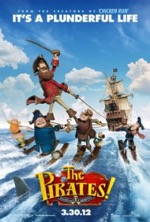
Starring: Hugh Grant
April 2012
If there’s an under-appreciated segment of the animated film industry it’s claymation, and when we use that word we’re talking about the undisputed masters of the form, Aardman Animations. Previous efforts have met with varied success: Chicken Run (2000) was fairly well received while Wallace & Gromit: The Curse of the Were-Rabbit (2005) was a runaway hit (judging from the movie’s overwhelming positive reception by audiences, critics and some golden guy named Oscar).
This time around, we’re taken along for a high-spirited adventure on the high seas, where the good guys are nineteenth century pirates and the bad guy is…Queen Victoria? Loosely based on the book by Gideon Defoe, Band of Misfits features the ne’er-do-well exploits of the Pirate Captain (yep, that’s his name) and his scurvy afflicted lot of loyal lads. Despite numerous entries, the Pirate Captain has never won the coveted Pirate of the Year award (much like Kevin Kline’s constantly overlooked Inspector Dreyfus in 2006s The Pink Panther). The Pirate Captain’s reckless pursuit of the prize becomes both premise and plot for the movie and, of course, we can’t make achieving his goal an easy one can we?
Having a fearsome disposition certainly helps, but ultimately the award will go to the pirate with the most booty…gold coins, not the snack. And so the Pirate Captain sets out to board every hapless vessel he encounters on the open sea, but comes up empty-handed when those vessels contain valueless cargos and equally worthless crews (comprised of plague victims, kids on a field trip, naturists and ghosts). But the plot thickens when the pirates board a vessel with an odd scientist named Charles Darwin, who takes an interest in the Pirate Captain’s plump parrot pet.
So how does Band of Misfits rank among the Aardman back catalog? The film is probably on even footing with Chicken Run, but certainly isn’t as refined or rousing as Wallace & Gromit. In Band of Misfits, the jokes don’t land with the precision of the latter and the action never quite reaches the frenetic pace of the former. Then there’s the story’s milieu; what it gains in familiarity it looses in originality.
Though these critiques may seem backhanded, the film is still a lot of fun and effectively combines clever and offbeat dialog (like when the captain avers that the best part of being a pirate is Ham Night) with outrageously creative visuals (like when dreaded Peg Leg Hastings arrives at the pirate gathering inside a whale’s mouth…the giant fish’s tongue rolls out like a red carpet).
The sheer logistics of producing one of these films is mind-boggling and it doesn’t seem quite fair that an achievement in claymation should be lumped together with traditionally drawn or computer generated animated films. Be that as it may, Band of Misfits probably won’t stand a chance against Pixar’s Brave of the raft of animated features coming out later in the year. Though Band of Misfits isn’t a top tier animated film, it’s certainly a voyage worth taking. Aye, matey!
Rating: 2 1/2
The Three Stooges (PG)
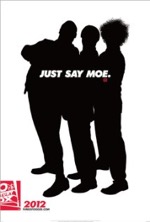
Starring: Sean Hayes
April 2012
The original Three Stooges episodes ran seventeen minutes each and many of them overstayed their welcome thanks to their exceedingly silly dialog and unrelentingly slapstick story lines. So then, how can the same brand of absurdist physical comedy, sight gags and throwaway puns maintain audience interest during the course of a full-length feature? Well, it can’t. However, The Three Stooges movie isn’t totally devoid of heart or the occasional joke that actually hits its mark (by accident in many instances).
The movie opens in a Catholic orphanage when the Stooges are young boys and immediately establishes the titular trio’s predilection for clumsiness, which is to say, innate skill at demolishing everything they see and touch. Despite putting their best foot forward, the three lads just can’t seem to entice any adopting couples to take them home—the dejected demeanors of the young actors are genuinely moving in these scenes and are a much needed change from the predictable pratfalls that dominate most of their screen time. Besides setting the tone for the movie, the orphan subplot serves as an origin story and a heartwarming denouement and is really the only element that prevents this film from being reduced to an outright bomb.
“Real” characters like Stephen Collins’ Mr. Harter, Sofia Vergara’s Lydia and Jane Lynch’s Mother Superior help to ground the film, if possible, but after five minutes spent with the adult Moe, Larry and Curly, it’s clear that these characters won’t be anything more than caricatures for the duration (though you certainly can’t fault the fully committed performances by Chris Diamantopoulos, Sean Hayes and Will Sasso, respectively). The Stooges’ dunderheaded attempt at raising money for the struggling orphanage comprises the bulk of the film and is simply a litany of lunacy. Let’s just say that if the original Stooges annoy the stuffing out of you, helping the theater staff clean toilets might be a better fate than subjecting yourself to an hour and a half of this brand of inanity.
When all is said and done, this Farrelly Brothers film is exactly what you’d expect it to be…daft and just plumb dumb. Having said that, the film does make me envious of all the youngsters I heard laughing riotously in the theater I attended. Ah, to be able to return to a time when this sort of zany nonsense actually entertained me. What do I know? Judging by the positive reaction from the movie’s target audience, this is an Oscar-worthy film.
Rating: 1 1/2
The Hunger Games (PG-13)
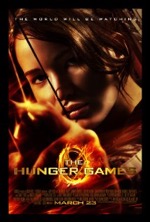
Starring: Jennifer Lawrence
March 2012
Based on Suzanne Collins’ wildly popular teen novel trilogy and directed by Gary Ross, (Seabiscuit), The Hunger Games is one of the most highly anticipated films of the year, superheroes notwithstanding. Starring Jennifer Lawrence (Winter’s Bone) and bolstered by a dazzling array of supporting talent nearly as scintillating as the dress Katniss (Lawrence) wears during the opening ceremonies of the Games, the film posits a disconcerting dystopian “what if.” What if two teenage tributes from each of twelve districts competed, to the death, in order to secure glory for the victor and more importantly, a lifetime of comfort and security for the winner’s family? Oh, and most alarmingly, the events of the game are broadcast live on Panem’s version of television for the viewing pleasure of the masses. Profits are earned from ratings and/or wagers placed on contestants. Consider it a reality show taken to the most unethical and macabre extents imaginable. But not to worry, if the global economic recession continues intensifying the way it has over the last few years, our own version of the Hunger Games will be airing on network TV this upcoming fall. Check your local listings.
The narrative love child of Lord of the Flies and The Most Dangerous Game, The Hunger Games is a highly entertaining, yet deeply disturbing, cautionary tale. The film’s most insidious and controversial attribute is its uncanny ability to coax its audience into reveling in the systematic slaughter of teens. An underlying thesis in many of Alfred Hitchcock’s movies is that all film spectatorship is inherently voyeuristic (Hitch takes this notion to its furthest extreme in his 1954 masterwork, Rear Window). If such a theory is true, then the wholesale massacre that ensues during this film’s action passages makes the audience complicit in its atrocities. To decry the teen violence in the film is one thing (which begs the question of why such protesting individuals are watching this film in the first place), but what if these scenes of imperilment and mutilation are actually enjoyable to a certain segment of the audience? Does that automatically make them psychopaths? Is it wrong to cheer when the “good” teens triumph over the “bad” teens? I mean, it’s one thing to watch adults poking holes in other adults (or aliens, robots, etc) with bullets, knives or laser beams, but it’s something entirely different to showcase teenagers slaying one another. Such is the moral minefield inherent in this seemingly straightforward survival story. But at the end of the day (or film) it’s all just entertainment, right?
The first twenty minutes of The Hunger Games contains more complexity than the entire Twilight saga. Even though both trilogies were written for a teenage readership, Collins’ The Hunger Games deals with weighty ethical and societal issues, while Stephenie Meyer’s Twilight books focus on teen angst, a love triangle and an ancient struggle between vampires and werewolves. Both movies open with a deer being stalked in the forest but the two story lines quickly and radically diverge from that point.
The dystopian mood and aesthetic is evident throughout the film, but is nowhere more apparent than in the city sequences…let’s face it, a forest is a forest, whether it’s the one just beyond District 12 or the CG forest created for the Games inside a dome, a la Star Trek’s holodeck. The soldiers employed for crowd control in District 12 during the reaping, adorned in white uniforms with white bike helmets, recall any number of futuristic enforcers, like the ones seen in THX 1138 (1971) and Soylent Green (1973). And is it my imagination or do these peacekeepers bear more than just a passing resemblance to the white clad imperial lackeys featured in Spaceballs (1987)?
The role of the command center that controls the conditions of the Games has been expanded in the movie and looks like a mix between an Apple store and the interactive virtual displays used by Tom Cruise in Minority Report (2002). Other than a modernized train, outlandish clothing, hair and makeup styles, some modern architecture and a nighttime cityscape, there’s little evidence to indicate that these people live in a futuristic, or post-apocalyptic, society. Credit the producers for minimizing costly exterior city shots and making extensive use of interiors and forest exteriors.
Director Ross hews closely to the source material; in fact, it could be argued that save for a few stylistic and narrative tweaks the movie has an almost slavish adherence to the book. In the majority of instances where this occurs a film will suffer greatly in the adaptation from book to screen but here, because Collins’ story is so rich and textured, the film actually benefits by sticking to what works. “If it ain’t broke, don’t fix it,” seems to be the overriding philosophy of the filmmaker. It’s hard to argue with the result.
In the book, much of the narrative is driven by Katniss’ internal musings and there are long passages where her thoughts and actions, without a single word of spoken dialog, move the story along toward its fateful climax. One of my major concerns with the adaptation from book to screenplay was that those personal thoughts and feelings would be lost unless a cheesy internal monolog was employed. Would we be able to discern, merely from actions or facial expressions, what was going on in Katniss’ mind? As it turns out, my fears were unfounded.
Much of the credit here goes to Ross, his cameraman and sound editor who brilliantly foreground Katniss’ thoughts and feelings with well considered, highly stylized shots. Case in point: after Katniss blows up a stockpile of food, the concussion from the blast knocks her into a state of disorientation. In the book, Katniss worries to herself that she may have gone deaf in one ear. In the movie, this fear is realized with muffled audio, a lens sliding in and out of focus and an extremely shaky Steadicam. These stylized shots are used with the utmost discretion so as not to overplay the effect. In less skillful hands, many of Katniss’ characterizations would’ve been lost in translation, but fortunately Ross and Co. deftly display Katniss’ thoughts onscreen.
All things considered, this is one of those rare instances where the movie is comparable in quality to the book upon which it’s based. The stage is set for a frenzied, fantastical franchise. Whether or not the sequels live up to this inaugural installment of Collins’ trilogy remains to be seen, but either way, this film has left me hungry for more.
Rating: 3
Jeff Who Lives at Home (R)
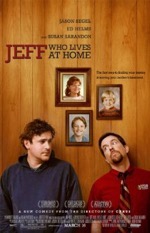
Starring: Jason Segel
March 2012
Jeff Who Lives at Home is a quirky, slice-of-life dramedy that’s carried on the capable shoulders of its stellar cast: Jason Segel, Ed Helms and Susan Sarandon portray the film’s central, dysfunctional family.
Sharon (Sarandon) is a cubicle-bound, middle-aged woman seeking some adventure amid the doldrums of her daily routine. Pat (Helms) is a hardworking stiff who misguidedly thinks that buying a new Porsche will somehow resurrect his floundering marriage. Jeff (Segel) is a superstitious homebody stricken with a lack of ambition and has a bought of agoraphobia. Yes, this is the Jeff referenced in the title, and though his brother and mother figure prominently into the plot, the central through line is Jeff’s meandering journey of self-discovery, which features a character arch that begins with Jeff near-catatonic on a couch and ends with Jeff as a bona fide hero.
The film has a heavy quotation of M. Night Shyamalan’s Signs (2002), which Jeff references on a consistent basis and has based the broad strokes of his life’s philosophy upon. Like in Signs, randomness versus design is an underlying theme in the film; however, more often than not, the movie skews toward the existential. Sometimes the existential drifts toward the improbable, like when Jeff, Pat and Sharon—all in separate vehicles—end up on the same bridge where traffic has halted due to an accident. The improbable sometimes gives way to the nonsensical, like when Jeff helps Pat spy on his cheating wife (Judy Greer) only to see Pat’s new Porsche towed away mid-stakeout.
All in all, Jeff Who Lives at Home is an entertaining indie, whose coincidence-laden, real-time narrative makes it a refreshing zero-to-hero yarn. So here’s to all the Jeff’s in our lives…though they may not contribute anything significant to society, they just might end up becoming the saviors of the world someday.
Rating: 2 1/2
21 Jump Street (R)
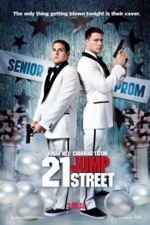
Starring: Jonah Hill
March 2012
Based on the 80s TV series of the same name starring a pre-Captain Jack Sparrow Johnny Depp, the new film version of 21 Jump Street revisits the “undercover cops go back to school to catch a bad guy” premise for the umpteenth time in film history. In the age of remakes, it was just a matter of time before this marginally successful TV property was exploited to its most ridiculous extents on the big screen. Just as nature abhors a vacuum, Hollywood hates leaving any potential revenue stream untapped.
The movie features Jonah Hill and Channing Tatum as two rookie detectives who’ve drawn the short straw and must go back to school; but hey, it actually beats their former assignment—security guards at a public park. The fish-out-of-water role reversal, where Tatum is now a bigot and bully and Hill is the life of the party, is amusing for about five minutes, but this plot device is severely belabored. Other than brief cameos by Depp and his partner, Dustin Nguyen (which is amusing for fans of the original show and confusing for those not familiar with the show), all we’re left with here is a new type of drug that’s running rampant through an inner-city high school and non-stop crass language and sexual (particularly homo-) references to fill out the story.
From the first bawdy joke over two dogs humping in the park to the climactic scene where a handcuffed man tries to retrieve his blown off phallus with his mouth, the movie is an unrelenting deluge of obscenities and indecencies of every variety imaginable…and plenty that were unimaginable before viewing this tawdry affair. The movie frequently crosses the line of bad taste and, as a default, settles for cheap laughs deriving from dunghill humor. But most of the laughing I heard in the theater was of the nervous variety as if those in the audience were looking at each other for approval…a silent “is it okay to laugh at this?” passing between them.
The real loss here is that this could’ve been a decent film had Hill and the other writers chosen a different tack. Hill and Tatum are skilled enough at both comedy and drama that some appropriate blend of the two genres could’ve made for an engaging story with occasional moments of humor punctuating episodes of hard-hitting drama. Just as the actor’s talents were wasted, so was my time and money. And I only paid two bucks…I feel sorry for the saps who paid full price for this morally reprehensible, wholly irredeemable affair.
I could go into more detail concerning the plot, what little of it there is, but I’d just be wasting your time with a potpourri of profanities and inanities. There have only been a handful of movies where, due to the subject matter or inappropriate dialog, I’ve felt like taking a shower after leaving the theater and this was definitely one of them. Clean up your act, Hollywood. Nobody’s laughing.
Rating: 1 1/2
Salmon Fishing in the Yemen (PG-13)
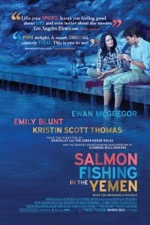
Starring: Ewan McGregor
March 2012
It’s fitting that one of the most unique movie titles in modern cinema also belongs to one of the more refreshingly original films released in recent years. That movie, based on the novel by Paul Torday, is Salmon Fishing in the Yemen. Yes, you read right…fresh water fishing in the middle of a desert. The premise seems utterly outlandish (a fact not lost on Ewan McGregor’s Dr. Alfred Jones, who initially refers to the proposed project as a “bloody joke”), but the story never takes itself too seriously and delivers a charming denouement that’s sure to please the “fairy tale ending” set.
Director Lasse Hallstrom (The Cider House Rules) uses his locations to great effect and appropriately blends traditional shots with stylistic ones (like the extreme high angle vantage of the serpentine reception desk in the office where Emily Blunt’s character works) in order to create the overall impression of a commercial film with mild indie influences. Though the film will be mostly relegated to art house theaters, Salmon Fishing certainly has commercial appeal since its style never upstages the story with excessive or ostentatious artfulness and due to the draw of its big-name stars.
The performances, as would be expected from this cast, are tremendous. Though Kristin Scott Thomas is relegated to a rather small part, she gets some of the best lines/laughs in the movie. McGregor’s seldom been as likable as he is here and the blooming Blunt is disarmingly charming. The fact that McGregor can overcome any moral objections to his character’s extramarital romance with Blunt, to the extent that spectators actually yearn for the couple to get together, is a testament to the acting acumen he now possesses (a padawan he is no longer).
One of the running themes in the film is the case of faith vs. science or random chance. Though it shouldn’t be ironic, the fact that the Arab man preaches faith to the pragmatic Caucasian man is a bit of a twist. If anything, this ancillary storyline exposes the increasingly agnostic worldview being adopted in the West. It also forwards the notion that devotion to a religion need not include the kind of fanaticism that leads adherents to crash jets into skyscrapers. The sheik in the film (Amr Waked) is a genuinely nice guy, and his portrayal goes a long way toward shattering the unhealthy stereotypes that have endured for ages, but were exacerbated by 9/11.
The “love story” here is sweet but is fairly contrived, like the through lines in all romance movies. The chemistry between principle actors is undeniable and there are several sublime moments in the film, like when McGregor names a handcrafted fly (for fishing) after Blunt’s character. However, the “wife and lover meet” passage near the end of the movie degenerates the plot into a glorified soap opera. Fortunately, minimal screen time is dedicated to this love triangle subplot and stasis is soon regained, but not until tragedy befalls the project and hope rises from the ashes…all true love must first be tested in the fiery cauldron of trial and opposition, I suppose.
Salmon Fishing probably won’t set the world (or box office) ablaze, but it’s a nice change of pace film with vivid scenery, sure-footed performances and a one-of-a-kind premise. Unlike the scores of uninspired, unbelievable dramedies being released these days, this is one film you can buy into…hook, line and sinker.
Rating: 3
This Means War (PG-13)
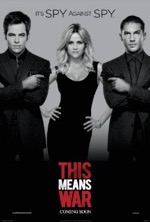
Starring: Reese Witherspoon
February 2012
The love triangle is one of the oldest narrative devices employed in romance movies. Here we have a Mr. and Mrs. Smith (2005) style spy movie where two of the top male operatives at a secret intelligence agency are in love with the same woman. The film’s relational equilateral is composed of some of today’s top talent: Chris Pine, Tom Hardy and Reece Witherspoon.
Once Pine and Hardy discover they’re in love with the same woman, the two men become instant enemies and resort to all manner of covert, underhanded or just plain infantile tactics in order to secure Reece’s affections. For the first ten minutes Pine and Hardy’s often extreme measures to sabotage each other’s chances with Reece are mildly amusing, but at the hour mark, peeling off your fingernails might seem a less painful alternative to enduring even one more minute of the pronounced and protracted silliness that runs rampant throughout the latter stages of the film. In the end, two-timing Reece must choose between her two smooth suitors. Unfortunately, her decision is predictable and stereotypical…somewhere Gloria Steinem is having a conniption.
Beyond all of the well-meaning shenanigans, some of the messages posited by the movie are utterly abhorrent—like everything that spews out of Chelsea Handler’s mouth. Besides setting the feminist movement back a couple decades (Reece is getting older, so she just has to have a man in order to find fulfillment), Reece’s character is so indecisive and so co-dependent that she goes through with Handler’s advice to sleep with both men as a tiebreaker. How in the world can Reece consider this to be good advice? I guess the main criteria for a person’s suitability as a spouse is how well they perform in the sack. Worse yet, one of the men grows a conscience and fails to consummate Reece’s experiment, thereby establishing himself as the more honorable of the two men. So naturally, Reece selects the lothario who seduced her to be her soul mate. We’re way past mild indiscretion at this point…we’re at the serious therapy stage. And the script just passes this off as normal behavior.
Reprehensible actions aside, the supposed twist ending is so contrived it might actually, and ironically, be the funniest part of the film. Though one of the characters is redeemed by way of this gimmicky ending, the denouement is far from satisfactory.
The label “run-of-the-mill rom-com” doesn’t even begin to describe the film, but for all of its inherent idiocy (and inappropriateness), the film is the kind of breezy, bawdy confection that appeals to today’s mass audience. That seems like a perfect impetus to launch into a diatribe about societal ills or ethics in media, but I think I’ll abstain. I wouldn’t want to start a war.
Rating: 2 1/2
The Secret World of Arrietty (G)
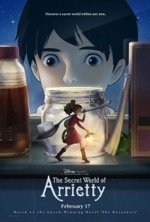
Starring: Bridgit Mendler
February 2012
The latest animated delight from Studio Ghibli is based on The Borrowers, the children’s book series written by English author Mary Norton. While long-standing fans of visionary director Hayao Miyazaki may experience initial dismay over the fact that the director didn’t…well, direct this film, they’ll be relieved to know that he serves as a co-screenwriter and one of the executive producers of the film. In his stead, director Hiromasa Yonebayashi does an admirable job of filling in for the master with a film that’s nearly as technically and artistically proficient as any of Miyazaki’s earlier films. However, Arrietty doesn’t possess the unfettered creativity of Spirited Away (2001) nor the wonder and whimsy of Ponyo (2008).
Although it would be tempting to blame Arrietty’s noticeable decline in storytelling magic on Miyazaki’s absence from the director’s chair, such an argument just wouldn’t be fair. So what prevents Arrietty from being a great Ghibli film? It certainly isn’t the Ghibli artists because the movie’s lushly mounted animation stands up to any other outing by the studio. It isn’t the stellar voice cast, headlined by Will Arnett, Amy Poehler and the timeless Carol Burnett. One could make an argument that the movie’s biggest debit is the adapted screenplay, that creativity is constrained by the pre-existing characters and narrative, even though slavish adherence to the source material doesn’t seem to be a problem here.
Although a story preoccupied with terminal illness and familial dislocation isn’t standard animated film fare, can we really blame the film’s creative letdown on these downer story elements? In the end, it may be impossible to determine why Arrietty isn’t an instant classic like the other Ghibli films. But who knows, as time passes, this film might go down as the greatest Ghibili film ever, making my argument here as moot as dial-up internet or pocket pagers.
Rating: 3
Journey 2: The Mysterious Island (PG)
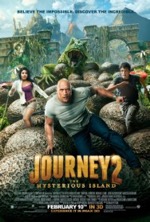
Starring: Josh Hutcherson
February 2012
The follow-up to Brendan Fraser’s Journey to the Center of the Earth (2008), Journey 2: The Mysterious Island extends the franchise which delves into the mythology, creatures and worlds of wonder created by early sci-fi writer Jules Verne. This time around, however, Fraser is out and Dwayne “The Rock” Johnson is in. Josh Hutcherson returns as young adventurer Sean Anderson. Sean’s friction with step-dad Johnson comprises most of the film’s character moments along with the handful of scenes Sean shares with his long-lost grandfather (Michael Caine), his new crush (Vanessa Hudgens) and her father, the skittish pilot (Luis Guzman). Rounding out the cast is Kristin Davis in an itty-bitty bit part as Sean’s mother.
From the title you would assume that the film would be based on Verne’s book of the same name, but you would only be 1/3 accurate. The movie’s narrative is ostensibly based on three literary classics: Verne’s Mysterious Island, Jonathan Swift’s Gulliver’s Travels and Robert Louis Stevenson’s Treasure Island. The common denominator of each tale (besides rip-roaring, old-tyme adventure) is the prominent showcasing of an island as the central locale. Averring that the island in each of these classics is one and the same is a clever and bold conceit, one that keeps the plot wheels steadily churning along through muddy musings and soft-core familial strife in the movie’s early goings.
However, the mash-up premise is quickly jettisoned just about the time Guzman steers his wing-and-a-prayer chopper into, not away from, a violently swirling waterspout. In all fairness, we do get to see a miniature pachyderm a la the Lilliputians as well as Captain Nemo’s Nautilus, but where does the movie borrow from Treasure Island…a gold-spewing volcano? More to the point, what if screenwriters Brian and Mark Gunn (no relation to Ben I’m sure) had capitalized on the original premise by weaving a tapestry rife with allusions and events from the three books instead of merely teasing the concept?
As a quote unquote family film, the movie tries to make object lessons out of wrong choices made by the characters, particularly Guzman’s greedy, gold-luster—he’s drawn to the mountain of gold like a giant bird to a giant bee (oops, one paragraph too early to use that analogy). The story also makes occasional, most often feeble, attempts at foregrounding modern parenting. Guzman wants to send his daughter to college so he goes in search of a bolder-sized gold nugget…with the way inflation is escalating, he might need two. Johnson desperately tires to connect with Hutcherson, but the best advice he can offer the teen is to woo young hotties with Johnson’s patented “pec pop.” Consider this scene the film’s nadir.
The zenith of the film, despite its utter absurdity, is the rapturous flight of the bumblebee’s sequence. The story really takes flight when the adventurers ride giant bees like airborne steeds, and the action kicks into high gear when the bees are stalked by even bigger birds of prey. Honorable mention goes to the sequences involving the sleek (but too small?) Nautilus, although restarting the engines with the charge from an electric eel is a bit farfetched even by this movie’s whimsical standards.
Where the acting is concerned, a more eclectic cast you’re not likely to find and they all turn in serviceable, if not award-winning, performances. Even though all of Johnson’s roles aren’t exactly the same he plays them all as such. On some future film the director will figure out that it’s more cost effective to replace Johnson with a cardboard standup of the actor with looped lines…the result would be no different than his performance here or in any of his other films.
Although the inestimable Caine never misfires, his character, as written, isn’t as enjoyable as would be expected. In fact, it’s hard to remember a Caine character that’s this unlikeable…he needlessly bickers with Johnson’s character and the constant cavalcade of condescension is off-putting. I certainly don’t fault the actor; I fault the Gunn’s for failing to give his character any redeeming characteristics.
In the end, though no better or worse than its predecessor, Journey 2 squandered a golden opportunity to creatively integrate exciting elements from the three literary classics it references into its yarn. Instead, the story defaults to simply serving up a reheated version of last summer’s action flick. Maybe for the next film, the writers can emphasize a solid plot with fleshed-out characters over SFX and action sequences…in other words, the polar opposite of this Journey.
Rating: 2 1/2
Chronicle (PG-13)
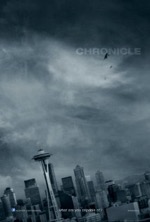
Starring: Dane DeHaan
February 2012
So here we have The Blair Witch Project (1999) meets Cloverfield (2008) meets TVs Heroes (2006-2010) meets every teen angst movie ever made. Shot almost entirely from the POV of the main character on his camcorder, Chronicle centers on a group of high school guys who discover an alien ship buried beneath a field. The result of their exposure to the alien technology is that they begin exhibiting superpowers which, of course, is a recipe for disaster since we’re dealing with horny, hot-headed teenage males.
One of the lads in particular, upon coming to the realization that he’s now an apex predator, starts committing random acts of mayhem…because he can. In the end, the only person who can stop him is his best friend. A city-smashing melee ensues, which recalls the climactic battle between the titular hero and his three nemeses in Superman II (1980), and the results are predictably tragic.
No one can say that this film isn’t a valiant attempt at creating a new sensation, but it rides on the coattails of many similarly themed efforts like the ones listed above. Additionally, there are undeniable shades of Shakespeare here and even allusions to Star Trek—the original series’ pilot saw Captain Kirk killing his megalomaniacal best friend, Gary Mitchell, in order to save his crew and the universe as we know it.
In the final analysis, Chronicle is a unique hand-held project that tells a decent story and is mildly diverting, if not earth-shattering. Maybe Chronicle II will provide some variety by cutting shots taken by two camera-wielding students.
Rating: 2 1/2
The Adventures of Tintin (PG)
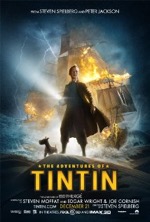
Starring: Jamie Bell
December 2011
Upon discovering a clue inside a model ship in a bottle, young reporter Tintin (Jamie Bell), Captain Haddock (Andy Serkis) and sidekick dog Snowy set out on a globetrotting journey to find a sunken ship named the Unicorn; one of Haddock’s ancestors was skipper of the boat. Of course, the adventurers have no interest in the actual ship…only the treasure contained inside its decomposing hull. As usually happens when treasure is involved, opposing forces are soon drawn to the search and here the villain is nefarious Sakharine (Daniel Craig). The race is on, but which group will be the first to find the Unicorn and lay claim to its bountiful riches?
Based on the series of comic books written and drawn by Belgium artist Herge in the 30s and 40s, The Adventures of Tintin is the new CGI/motion capture extravaganza envisioned and produced by two of cinema’s finest action/adventure directors: Peter Jackson (The Lord of the Rings) and Steven Spielberg (Jurassic Park). In various interviews, both auteurs have expressed their immense affection for the source material. That profound reverence is abundantly evident in the loving detail lavished upon every frame of the film. Adapted from three Tintin stories, The Crab with the Golden Claws (1941), The Secret of the Unicorn (1943) and Red Rackham’s Treasure (1944), The Adventures of Tintin is the perfect marriage of the Pirates of the Caribbean and Indiana Jones franchises.
The opening credits sequence, which features a traditional animation aesthetic with an infectious jazz score by the inestimable John Williams, is an amusing and stylish montage of action vignettes that sets the tone for the film. The snappy opening recalls similar sequences in the Pink Panther movies, Casino Royale (2006) and Catch Me If You Can (2002), which was also scored by Williams.
When the film begins, the cutting-edge alchemy of mocap and startlingly photorealistic CGI backgrounds overwhelms the eyes with its mesmerizing brilliance. Indeed, it takes a moment for the brain to adjust to the fact that what you’re seeing isn’t real but, as Miracle Max from The Princess Bride (1987) would say, only “mostly” real. Or maybe we should use the word partially real to describe how staggeringly real-to-life the mocap images appear in the film, courtesy of Jackson’s team of FX wizards at Weta Digital.
One of the issues Pixar ran into while producing The Incredibles was that the CG humans were so lifelike that test audiences reacted negatively toward the pixilated people. Apparently there’s such a thing as designing CG characters that look too real. Pixar’s solution was to redesign their character templates with less detail while adopting facial features more in step with traditionally hand drawn cartoon characters. Judging from the film’s runaway success, it seems that Pixar made the right call.
That said, if there’s a tolerable range for how realistic CG characters can appear (without producing mental revulsion), Tintin definitely pushes the boundaries with its startlingly photorealistic people, places and things. Though some of the movie’s characters look more cartoony than others, detective duo Thomson (Nick Frost) and Thompson (Simon Pegg) for instance, others, like the eponymous character, are astoundingly realistic in appearance—especially around the eyes. Tintin’s trusty companion, a scrappy dog named Snowy, is rendered in CG but has more of a traditional 2D appearance, with matted fur rather than the poofy pelt boasted by Sully in the Monsters Inc. films.
While the Lord of the Rings trilogy cracked open the door for motion capture performances, Avatar (2009) kicked the door down with its breathtaking blend of mocap and CGI. The mocap employed here is the next iteration of the process and it only seems fitting that Jackson would return to his go-to guy for one of this film’s mocap characters. Having already brought Gollum and King Kong to life, the brilliant Andy Serkis was the perfect (only?) choice to play Captain Haddock. Serkis turns the boozy bearded one into a fully realized character, filled with fears and foibles. It’s doubtful that anyone else could’ve pulled off the character quite the way Serkis does. Jamie Bell, likewise, wholly inhabits the title role and imbues the character with a degree of exuberance and wide-eyed wonder befitting the young adventurer…such emotions are perfectly conveyed by Bell’s facials, body language and movements. Tintin’s unquenchable thirst for knowledge in pursuit of a good story is infections and makes Bell’s captivating performance a joy to watch.
As for the movie’s action, and there’s plenty of it, there can be no doubt as to Spielberg’s involvement with the storyboards as his signature is evident in each frame of the movie’s many action scenes. Few would argue that the makeshift zip-line course in Morocco is the finest action scene in the film. The sequence is an exhilarating series of close shaves and gravity defying stunts which is immersive to the degree that you feel like you’re on a roller coaster ride. Although a completely different setting and scenario, this sequence is reminiscent of the frenetic, high-throttle mining cart pursuit in Indiana Jones and the Temple of Doom (1984). What I like most about the sequence is that it actually allows your eyes to adjust to each movement or course correction, unlike the majority of action films these days which use a blurry handheld camera in capturing chase/fight scenes. Thank you, Mr. Spielberg, for bringing back the sheer visceral elation of a well choreographed, judiciously filmed action sequence.
Tintin is a rollicking, rousing good time with memorable characters, dazzling action sequences, stellar direction and a bracing mystery all rolled into an intensely fun and frenetic action/adventure yarn told with classic Hollywood flair. When Jackson and Spielberg first met to discuss bringing Tintin to the big screen, they agreed to do two movies and that they would each direct one of the films. Looks like it’s Jackson’s turn to step up to the wicket. We’ll see if he brings a darker sensibility to the sequel: Tintin and the Marauders of Mordor.
Rating: 3
J. Edgar (R)
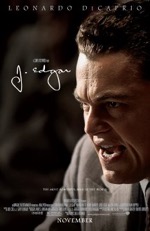
Starring: Leonardo DiCaprio
November 2011
What everyone will be talking about after seeing the Clint Eastwood helmed biopic, J. Edgar, is Leonardo DiCaprio’s performance as the title character…and why shouldn’t they? It’s a career defining turn by the actor who once stood on the bow of a ship and yelled “I’m the king of the world!” If he keeps turning in performances like this one, DiCaprio may someday own that very title.
A fascinating character study of the former FBI director during the 40s and 50s, J. Edgar is psychologically complex despite the character’s single-minded furor to rid our country of any trace of Communism. The central thesis of the film, as is conveyed in an opening narration by DiCaprio portraying a doting J. Edgar Hoover, is that “even great men can be corrupted.” J. Edgar spent his entire life and career ferreting out communists and other nefarious agents with an unholy zeal.
The bitter irony here is that J. Edgar himself was corrupted, not by the system, but by his own hubris and egomania. J. Edgar’s bloated view of himself is powerfully exposed near the end of the film by his good friend and assistant Clyde Tolson (Armie Hammer). The essence of Tolson’s scathing comments, if they are to be believed, rewrites some of the major events of the film effectively excluding J. Edgar from many of the story’s main events, which, of course, would make for a brief and dull movie.
Tolson gives his friend a reality check when recounting arrests that were made not by J. Edgar, as he claimed, but by other agents. Tolson’s frank assessment of his friend’s consistent self-aggrandizement stuns J. Edgar at first, but the moment of mental sobriety is short-lived and the FBI director is back to ridding the world of perceived evils. There’s something poignant here about how we see ourselves versus how others see us.
As portrayed in the film, J. Edgar was a grade-A narcissist who was in love with himself and his work, to the exclusion of anyone else. J. Edgar had mommy issues (his mother is played by the inimitable Maggie Smith) and eschewed heterosexual (Naomi Watts) and homosexual (Hammer) offers for companionship. There’s something to be said for the ardent adherence to an ideal, especially one that ensures domestic tranquility, but all extremes are dysfunctional and J. Edgar’s rigidity of behavior and thought alienated even the few people in his life who actually cared about him. Though addled by a different form of psychosis, J. Edgar was just as mentally ill as John Nash was in A Beautiful Mind (2001).
None of these broad stroke characterizations take anything away from the intricate nuance of DiCaprio’s performance and one wonders how much instruction the actor received from Eastwood, who is notorious for getting what he wants in the first take. It seems to me, and this is just a guess, that Eastwood was more hands-off than micromanaging with respect to the film’s performances. As an actor himself, Eastwood is an actor’s director, so it stands to reason that he would just roll the camera and trust his talent to deliver fine performances—which they do to a superlative degree here.
Eastwood’s direction might feel a little labored at times, but his method is actually an unqualified work of genius. Most of the shots, with a few notable exceptions, are done in the style of a classical Hollywood film. As such, Eastwood mirrors the filming techniques employed in the period he’s portraying—clever. Though difficult to defend, it’s also my belief that Eastwood’s conservative direction is the perfect parallel for the conservative politics displayed in the film. In a sense, Eastwood, whose career has been marked by decidedly conservative narratives or sentiments, was the perfect choice to helm this Oscar bait biographical period piece about such a fiercely conservative political figure from the not-too-distant past.
Though the production values are superb across the board, we hardly even notice the sets due to DiCaprio’s scenery-chewing performance. Indeed, there are moments when the actor so inhabits the character that we no longer see DiCaprio—only J. Edgar. This is especially true of his scenes as the older J. Edgar where his acting is genuinely convincing despite that fact that he’s buried under latex and make-up. Unfortunately, the same cannot be said of the make-up or performance by Hammer as Tolson. We often get the sense that Hammer is “playing” an old person rather than simply being an old person. In many instances that noticeable disparity pulls us out of the reality of the film. Granted, Hammer’s make-up isn’t as good as DiCaprio’s, but he’s decisively overmatched by DiCaprio and one wonders if a different casting choice would’ve served the story better.
J. Edgar might be a name frequently bandied about come awards season. Although a nod for Eastwood’s directing is uncertain at this time, DiCaprio seems to be a strong contender for Best Actor and might just walk away with the golden statuette. It’s anyone’s guess if the film will win Best Picture, but one thing’s for sure, come February, J. Edgar will be well acquainted with Oscar.
Rating: 3
In Time (PG-13)
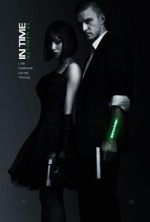
Starring: Justin Timberlake
October 2011
TAKING AIM:
In Time, the trippy techno-thriller from director Andrew Niccol, features futuristic twists on ripped-from-headlines issues like the global recession and the evaporation of the middle class. The film features an intriguing “what if” scenario which taps into universal anxieties, such as growing old and living in the moment amid increasing socio-economic uncertainties. Oh, and don’t look now, but Justin Timberlake is the male lead. Yep, you heard right…Timberlake has earned leading man cred, but should he abandon his day job…er other job, just yet?
TARGET PRACTICE:
In a World…: Where time is the currency, many must die so that a few might have immortality. But we weren’t meant to live forever, as Amanda Seyfried’s affluent Sylvia Weis asserts in a tone so earnest that we almost miss the line’s stilted edge. The movie’s premise, which feels like yet another Philip K. Dick adaptation, is harrowingly cautionary yet easily digestible…we learn the rules of the game quickly. Unfortunately, the metaphor of time as currency looses its novelty after the first hour, just about the time meaningful dialogue or character moments are replaced by shootouts and car chases.
An Investment in Time: Let’s face it, movies are an investment in time (and let’s not forget money…as if we could with today’s exorbitant ticket costs). For poor films we often hear people say “I wish I could get those two hours of my life back.” While the employment of such a line is oh so tempting for a film like In Time, I honestly don’t feel like it would be a fair assessment of the film’s high concept premise, however heavy-handed and unwieldy it becomes by the end.
Borrowed Plots: In the film’s mildly-dystopian future, individuals running out of time must beg, borrow or steal time in order to survive. In a similar practice, Niccol (who serves as writer and director) has liberally lifted story elements from other literary or cinematic sources. Aside from time bandits being called minutemen, the most obvious antecedent here is Aldous Huxley’s eerily prescient 1932 novel Brave New World. In Huxley’s near-future society, individuals are assigned to castes based on genetically engineered abilities or proclivities. Here, the class system is purely based on time: those who have it and those who don’t, those who use it wisely and those who waste it. The movie depicts time zones, which clearly demarcate those who have very little time left in their life, those who have an adequate amount of time left and those who are “time rich.” Another literary touchstone is Victor Hugo’s Les Miserables (1862). Cillian Murphy plays a futuristic cop (dubbed “time keeper”) hell-bent on apprehending the movie’s stars and exhibits more than just a few of the characteristics inherent in the intractable Inspector Javert. As heavily pursued fugitives, Seyfried and Timberlake are a type of Bonnie and Clyde, but these two actors are a far cry from the superlative Warren Beatty and Faye Dunaway, who played Bonnie and Clyde in the landmark 1967 film of the same name. A more obscure source of inspiration for the film can be traced to Nickelback’s 2007 music video for their song “Savin’ Me.” In the video, the balance of a person’s lifespan appears overhead and the main character in the video saves people from falling pianos, etc. He knows a person’s life is about to expire when he sees that their life counter is nearly depleted. A virtually identical system is employed in this film as characters can glance at the inside of their forearm to get an up-to-the-second balance of their life account.
Stepford Society: Early in the film we learn that the near-future humans are genetically engineered to stop aging at twenty-five. Most people would view that arrangement as ideal and highly desirable. On the downside, however, such altered individuals only live to age twenty-six. This plot element is obviously another thinly veiled attempt at making social commentary; this time the eternal quest to look and stay young is called into question. I suppose Botox and nip/tuck will eventually give way to genetic alterations on a grand scale, but why do members of the film’s futuristic society die at twenty-six (barring a risky venture to obtain more time)? Could it be that the plot needed an artificial deadline in order to produce urgency…especially when characters see the last few precious seconds of their life ticking away? And who says twenty-five is the ideal age? Isn’t that a bit, well…ageist? Ultimately, a world where Olivia Wilde is your mother and Amanda Seyfried is your girlfriend may seem perfect, at least on the surface, but isn’t it just a little creepy—much like the enhanced women in The Stepford Wives (1975, 2004), which serves as yet another filmic precursor to this movie?
The Need to Fix Things: In TVs Lost, Dr. Jack Shepherd (Matthew Fox) has the co-dependent compulsion to fix everyone and everything around him. Screenwriters, especially those who write sci-fi films it seems, have the same need to reconcile societal dysfunctions or imbalances by movie’s end. A recent example of this is Bruce Willis’ Surrogates (2009), which features a society where humans live out their lives through android surrogates (again, it’s a cosmetically perfect society since androids never age). The moral dilemma of whether or not to preserve such a perfect, yet shallow, culture falls to Willis, who makes the fateful choice to reset society to its original, flawed status. Here, the inference is that the two leads have determined to change the corrupted system when they resolutely march up the steps of a government building in the movie’s final scene (as if changing nationwide policies could be that simple.) The movie seems to imply that a coup will set everything right…a frightening notion for our current society, despite its pervasive governmental corruption and economic turmoil. So why do writers/producers feel the need to resolve these cautionary tales with touchy-feely endings? Do they think it will result in more butts in seats? Didn’t work out too well for Surrogates, did it? I assure you, a film can be just as compelling by depicting some dark dystopia, plopping some characters into the middle of the mess and allowing them wrestle with the exigencies of life in such a disparate landscape…and then leave them there. Ridley Scott did it successfully in a little film called Blade Runner (1982). Seems to me it’s been pretty well-received over the years. Note to Hollywood: “You don’t have to fix everything.”
PARTING SHOTS:
Tough thought-provoking, the movie’s extended metaphor is overdetermined, especially in the opulent time zone (do the “time rich” dole out their precious time to “time poor” charities?). The movie comes close to making poignant commentary, like the dangers of wasting time for example, but the message fails to penetrate the barrier of contrived story devices and heavy-handed homilies on societal ills. When the premise starts to wear thin, Niccol defaults to a series of action sequences to move the film toward its inevitable, predictable conclusion, since he really has nothing else to fall back on. In Time is a big disappointment because it had something to say but got in its own way. It’s a shame, but in the end the movie prevented itself from having any lasting impact. Only you can determine whether or not the film is worth your time, but for my money it’s only worth about two dollars of yours.
Rating: 2 1/2
The Big Year (PG)
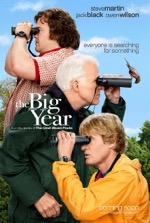
Starring: Owen Wilson
October 2011
TAKING AIM:
The comedic dream team of Owen Wilson, Jack Black and Steve Martin star in an offbeat dramedy that manages to be all about birds without being for the birds.
TARGET PRACTICE:
Filmic Antecedent: Twister (1996) gave us a glimpse into the lives of extreme hobbyists known as storm chasers (there’s even a reality TV series based on this thrill seeking subculture). While the enthusiasts in The Big Year don’t face the same kinds of imminent dangers while engaging in their hobby, their furor, devotion and blatant disregard for anyone who doesn’t share the same passion is just as intense as those tornado tailgaters in Twister. The fanatics in this film are called “birders,” not bird watchers, which anyone can be by looking out their window. Birders travel far and wide to find rare and exotic birds and some can identify a bird by its chirp or warble (others can even approximate such sounds with their vocal cords and throat…weird).
Martin is Masterful: This isn’t the first time Steve Martin has teamed up with two other film funny-men (Chevy Chase and Martin Short in 1986’s ¡Three Amigos!, for instance), but his compadres in this film (Wilson and Black) are significantly younger than him. Even though Black’s character narrates the movie and Wilson serves as a pseudo-antagonist, it’s Martin who emotionally anchors the film. We feel pathos for Martin’s character when he tosses his cookies on a boat or when he misses a plane that costs him a trip to Attu, Alaska—a hotspot for birding in May. We can’t help but chuckle when Martin initiates his patented victory jig. But most of all, we can only try to fight back tears when Martin whispers his first words to his newborn grandson. It’s moments like this that ground the movie and prevent it from degenerating into an off-kilter buddy movie centered on a fringe pastime.
Winners and Losers: Of course, Wilson and Black aren’t chopped liver. Black is charming as the unlucky-at-love everyman with daddy issues and Wilson is the most disarmingly likable antagonist to come along in recent film history. One of the prevalent themes in the film is sacrifice—what are these characters willing to give up in the pursuit of their goals/hobbies/dreams? By the end of the movie, each of the main characters looses in one area of his life but also wins in another; such tradeoffs are an accurate depiction of real life. It’s a credit to Howard Franklin’s screen adaptation of Mark Obmascik’s book that the resolution holds some surprises for the viewer: who wins and who looses what might not be exactly what you’d expect.
Semiotics Playground: Part of the enjoyment in watching buddy films, especially if some type of journey is involved, is tracking the progress of the characters throughout the course of the film. Here, checkpoints of different stages of the characters’ “big year” are demarcated with a variety of graphics and other visual cues. In film studies, semiotics is a theory that deals with signs and symbols in movies. In many instances a film’s deeper meaning can be gleaned from its patterns/textures, lighting/shading, camera position/angle/movement and, indeed, physical signs. Here, geographical maps of various stops on their journey are superimposed over live action shots of the characters, a la the Indiana Jones series. A similar effect shows handwritten text over the Alaskan countryside, designating the exact spot where a particular bird has been spotted. Text markers appear at random intervals in the movie and represent specific locations or points in time. Most visually innovative is the film’s use of overhead counters to indicate the current number of birds each character has spotted—the graphic is especially effective when all three characters spot the same bird at the same time.
PARTING SHOTS:
In the final analysis, those expecting to see these A-list comedians in an all-out goof fest are sure to be disappointed with The Big Year, which breaks down at roughly 90% drama and 10% comedy. Still, this is one of the most original movies to have come along in quite some time, and so much the better since it offers an educational component to its often single-minded, straightforward narrative. The film definitely isn’t earth-shattering, but it offers a few humorous and touching moments that make it a worthwhile entertainment. Sometimes it’s just nice to see something fresh, however unusual. The Big Year is both…highly recommended.
Rating: 3
Moneyball (PG-13)
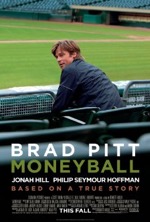
Starring: Brad Pitt
September 2011
So here we have one of the timeliest movies regarding the current state of our society and economy. Oh, and it just happens to be about baseball. Moneyball chronicles the actual events surrounding a general manager’s brazen decision to eschew the tried-and-true recruiting strategies employed by MLB franchises for over a hundred years in favor of a statistical algorithm developed by an economics graduate from Yale.
Oakland A’s general manager, Billy Beane (Brad Pitt), indicts his team’s old guard for upholding errant philosophies of recruiting talent—i.e. don’t trade for a player if his girlfriend is ugly because that means he has no confidence. In 2001, the A’s put 39 million dollars worth of talent on the field while the New York Yankees fielded a team worth 114 million. Knowing that his David will never be able to slay the Goliath’s of the league, Beane tells the room of stodgy scouts, “It’s an unfair game…we’ve got to think differently.”
Enter Peter Brand (Jonah Hill) and his paradigm shattering notion of buying wins not players. Beane sticks his neck out for Brand and his revolutionary concept, but club manager, Art Howe (Philip Seymour Hoffman) is resistant to the radical adjustments made to his line up. In the early goings, it appears that Beane will get the axe, but by season’s end something magical happens in the other City by the Bay as statistical probabilities turn into logic-defying reality.
There’s little suspense here for MLB fans who know the results of Beane and Brand’s experiment, but the storytelling is compelling and the performances—across the board—are superb. Also, those normally turned off by “sports” movies just might enjoy Moneyball because it’s more about characters and convictions than memorializing some legendary game from the past. However, Moneyball isn’t completely devoid of competition as it effectively weaves actual game footage along with reenactments by actors into a seamless tapestry that supports the story rather than dominates it. All of this to say, Moneyball is an engaging “true story” drama that just happens to be about sports.
So what does all of this have to do with the current state of our country? Well, maybe it’s just me, but doesn’t it seem like we can use some of Beane’s and Brand’s open-minded strategizing on Capitol Hill about now? Clearly the old ways, promulgated by old guard politicians (many of whom are, well…old), just don’t work anymore. I’m not suggesting that we throw the baby out with the bathwater, but there can be no doubt that some new ways of thinking are needed in order to get our economy back on track.
Moneyball exposes, in microcosmic form, the kind of myopic and rigid reasoning that’s lead to stagnation and entropy (not to mention apathy) in that colossal franchise called the USA. So I guess it’s true what they say about baseball imitating life. Heck, for many people, baseball is life!
Rating: 3
Drive (R)
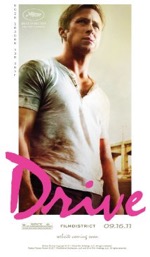
Starring: Ryan Gosling
September 2011
When I saw the trailer for Drive, I thought it was going to be another of those high-octane, lowbrow car race/chase movies in the mold of the Fast and Furious franchise. How wrong I was. Although centered on cars, specifically a silver Chevy Impala, Drive is more Shakespearian than Vin Dieselian (that didn’t quite roll like I wanted it to). There are plenty of scenes or elements in the movie that hearken back to earlier cinema staples involving a solitary man driving a car at night, the most obvious antecedent being Martin Scorsese’s Taxi Driver. Drive also borrows from a variety of styles/genres, including: films noir (Double Indemnity) and thrillers (Vertigo) in the way it anthropomorphizes the city as an ancillary character in the film with streets and highways representing veins and arteries.
As it turns out, the story more closely resembles a Shakespearian tragedy, particularly Macbeth, than any other car-centric film. Though not quite approaching the bloodletting witnessed in an R-rated splatter fest like Scarface (1983), the film is exceedingly bloody and sees nearly every main character stabbed or shot by movie’s end. However, the movie never crosses the line of becoming gruesome or gratuitous, and, if anything, is artful in how its characters are dispatched. Again, car movies aren’t usually mentioned in the same breath as art films, but Drive comes close to straddling both sides of the street—it’s the perfect balance between a well made mainstream movie and a stylish indie.
And speaking of art, there are some beautiful shots/sequences in the film—and many of them have absolutely nothing to do with cars. There’s an understated scene, with minimal dialogue, where Ryan Gosling and Carey Mulligan converse inside their apartment complex and we see the orange-red glow of a sunset bathing the distant skyscrapers seen through the window the couple is standing in front of…the same hue highlights Mulligan’s hair and back in an ethereal outline. As far as production is concerned, the scene is fairly unremarkable, save for the narrow window of opportunity the crew had to work in before the rapidly setting sun disappeared beyond the horizon and the lighting effect was lost. Besides the execution of the shots, what’s being conveyed between the characters—the subtext—is what’s most fascinating about the scene. Indeed, it could be argued that the lovelorn characters realize, on some innate level, that the kind of relationship they yearn for with each other can never be realized and the setting sun signifies the impending cessation of their friendship.
Even though the themes and mode of storytelling are completely different, there’s something about Drive’s characterizations, pacing and narrative structure that feels similar to a Coen Brothers film, especially Blood Simple (1984). I have no reason to make such a comparison other than my own interpretation of Drive. Although the trappings are divergent in nearly every way, Drive and Blood Simple are examples of thrillers or postmodern films noir. Both movies boast complex characters/relationships, a botched heist and excessive bloodletting.
Another genre quoted from here, although certainly not directly, is the Western. I will stop well short of classifying Drive as a modern Western, but in addition to bounty hunters and shootouts, Gosling’s character is a laconic, rugged individual who is competent not as a gunslinger but as an expert driver. Additionally, Drive turns Western conventions on their ear when Gosling’s character leaves behind a fortune and the woman that he could’ve settled down with, and drives off not into the proverbial sunset but into a pitch black night. The movie also leaves us with a lingering question: Will Gosling’s character even survive since he was wounded in the final confrontation?
The performances here are, fittingly, just as stellar as the performers. Gosling and Mulligan mesmerize as misfortunate lovers, whose ill-timed and ill-fated romance never has the chance to blossom into the kind of lasting relationship they both need and desire. Just as serendipity brings the couple together, tragedy splits them apart. Oh how fickle fate can be. In addition to the dazzling leads, the movie’s supporting players are equally impressive: Albert Brooks, Bryan Cranston and Ron Perlman were all perfectly cast and deliver rich and authentic performances.
Drive is a subtle and engrossing character study and a thinking person’s action film. Some will criticize Drive for not having enough, well…driving in its story or that it needed more action sequences. For me, I just wanted the story to keep going—to learn what would happen next with these characters. Regardless, the movie successfully upholds the old show biz maxim that instructs writers to “always leave them wanting more.” There’s definitely part of me that wants to follow Gosling into that good, dark night to learn the fate of this fascinating lone wolf. Drive on, young Gosling, drive on.
Rating: 3
Contagion (PG-13)
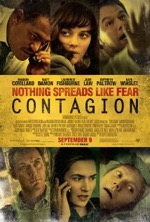
Starring: Matt Damon
September 2011
Contagion is a film that literally has everything going for it and yet somehow ends up being a mild disappointment. The cast is beyond stellar. The old expression “more stars than you can shake a stick at” certainly holds true here…Damon, Paltrow, Winslet, Law, Fishburne, Cotillard, Cranston, Gould, ad infinitum. Director Steven Soderbergh, who’s no stranger to assembling large ensembles (Traffic and the Ocean’s trilogy), cleverly recruited the dazzling array of A-list talent by meting out bite-sized roles that only required, in most cases, a minimal time commitment on the shoot. Such a strategy to lure top-shelf talent is as insidious as…well, a population eradicating virus.
Other than acting and directing, the one area of the film that gets an A+ is the real-world science behind the nature of infectious diseases and the contingency plans or protocols set forth by media, military and other government organizations after an outbreak has occurred. The procedural factor, however, is also detrimental to the film, as some scenes play like a glorified episode of CSI (and, indeed, Fishburne’s presence at the CDC does nothing to discourage this notion), while simultaneously slowing the pacing to that of a courtroom drama.
I would refer to Contagion as a thinking person’s disaster film, but that description would be grossly inaccurate: the film’s methodical narrative is more educational than sensational and more filling than thrilling. Still, the film isn’t devoid of merit, especially when it comes to the human equation—i.e., how do people react to the species-threatening epidemic? Do they cower in fear or off themselves? Do they cloister themselves from the rest of the world and wait it out until a cure is discovered? Do they go out of their way to help others even if their own safety is jeopardized? Or, as Law’s character does, do they attempt to make a buck off of the tragedy…the capitalism of catastrophe?
As interesting as the various displays of the human condition are, the humanity of the characters themselves is often as cold and sterile as one of the many science labs seen in the movie. Look no further than Damon for an example of how unemotional the humans are in this film. Damon’s best scene is when he insists on seeing his wife (Paltrow) even after the doctors have told him that she’s passed away. We can forgive his numbness during this scene (and, as ironic as it sounds, the sequence isn’t without an element of humor), but Damon only transitions from denial to grieving during the film’s dénouement. Granted, his thoughts have been preoccupied by the crisis, but he shows no remorse over his wife’s death until the waning moments of the film and doesn’t even mention, much less shed a tear over, his departed step-son.
Though the film achieves a praise-worthy degree of technical proficiency, with startlingly realistic direction that delivers a blow-by-blow description of how infections spread, the story, despite its best efforts to endue the audience with feelings of anxiety and panic, is strangely unmoving. Perhaps it’s that we have little to no emotional investment in or identification with any of the characters before they start keeling over…and then we’re on to a different place with different characters. Though the ping-pong plot certainly doesn’t foster character development, Soderbergh’s direction keeps the audience at arm’s length, never inviting viewers into the middle of the action. In short, the story lacks heart.
Contagion’s brilliant final sequence, which tracks the virus from its improbable creation all the way through to its transmission to patient zero, is worth the price of admission. It’s just a shame that the rest of the film didn’t capture the same degree of visual verve and visceral vitality. One thing’s for sure, whether you like Contagion or not, I bet you’ll start washing you hands more frequently after watching the film. Oh, and stop touching your face!
Rating; 2 1/2
The Help (PG-13)
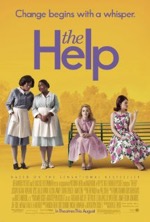
Starring: Emma Stone
August 2011
Based on the book of the same name by Kathryn Stockett, The Help tells the tale of a progressive young journalist (Emma Stone) who has the conviction to write about the mistreatment of the black nannies/maids in the Deep South during the 1960s. Of course this decision doesn’t sit well with the bridge club and Stone is soon ostracized by fellow whites for her stance against the inhuman and unethical treatment of black workers at the hands of white employers. Stone is embraced by the black women whose testimonies soon fill the pages of a book she writes on the subject of the hostile and adverse working conditions “the help” is made to endure on a daily basis.
Bryce Dallas Howard is magnificent as the ringleader of the elitist white women and is the perfect foil for the idealistic and seemingly harmless Stone. Although her screen time is limited, Sissy Spacek is delightful as Howard’s not-all-there mother, and some of the most memorable lines and moments revolve around her character. The African American stars are all superb, especially Viola Davis and Octavia Spencer as feisty Minny. Certainly not to be forgotten is Allison Janney’s turn as Stone’s well-meaning, matchmaking mother.
Performances aside, the movie’s moral is delivered in a subtle, palatable manner that avoids the kind of sermonizing that often plagues social message films. In that regard, the movie does an excellent job of showing the injustices being perpetrated against the black women instead of just telling us about their plight, which would be far less compelling.
The historical elements—costumes, cars, etc—are authentic to the milieu and lend the “feeling” of being in small town Mississippi in the 60s. The narrative, which certainly isn’t radically different from other stories of its ilk, populates its plot with believable people faced with a variety of realistic challenges. Sometimes these pressure filled situations produce memorable moments, like the “poo pie” scene. The Help is a superb period piece that presents a slice-of-life story of a dark period in America’s not-too-distant past.
Rating: 3
Rise of the Planet of the Apes (PG-13)
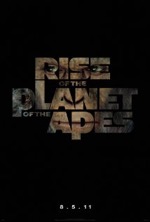
Starring: James Franco
August 2011
TAKING AIM:
The seventh movie in the outlandish sci-fi series is more down-to-earth than its forebears, but is more commonplace and less spectacular as a result of its contemporary plot and settings. An origin story of the decades-spanning furry franchise, Rise of the Planet of the Apes is intended as a series reboot, much like Batman Begins (2005) was for Christopher Nolan’s modern tales of the Caped Crusader. Although the film flirts with a message, something along the lines of not harming animals or how unethical scientists create monsters, it ends up as an irrelevant tale coupled with uninspired direction and largely unremarkable performances, which leads us to…
TARGET PRACTICE:
Let’s Be Frank About Franco: James Franco is serviceable in the lead role, but takes a back seat in nearly every scene he shares with Caesar, the story’s focal point and top ape. Franco’s performance is understated, which is appropriate to the role, but he doesn’t bring anything special to the part of a scientist with a conscience grappling with an ethical dilemma. As such, Franco’s presence and performance are serviceable, but not necessarily memorable. Let’s be frank, Franco has always been a fairly flat actor who works well in an ensemble but really isn’t leading man material, which this film amply proves.
Lithgow Finds Another Furry Friend: John Lithgow just can’t seem to get away from furry animals in his more fantasy themed films. It’s been an eternity (1987) since Lithgow befriended an amiable Sasquatch in Harry and the Hendersons (he had a little more hair back then too). Here, Lithgow gloms onto Ceasar who becomes a therapeutic presence in the life of his character, an Alzheimer’s sufferer. Lithgow’s performance is finely tuned and subtly executed—his swings of lucidity aren’t nearly as dramatic as many other Alzheimer’s portrayals in film, which is refreshing to see. I guess it should come as no surprise that Lithgow could so successfully pull off such a role, but it is confirmation of what we’ve known about the versatile actor for years…he’s got quite a range (I mean, compare his character here to the one he played for six years on TV in 3rd Rock from the Sun). Lithgow’s greatest contribution to the plot is his sometimes quirky, sometimes profound advice to his screen son, Franco. As a foil and voice of reason, Lithgow’s interactions with Franco help to ground a movie rife with fantastic notions. Lithgow provides a major assist to Franco, whose often uninspiring performance needed plenty of support.
Solid Support: Brian Cox walks a fine line between dictatorial overseer at an animal control center and outright villain. We dislike him because he’s deceptive and, ironically due to his choice of professions, because he doesn’t seem to care one whit about animals. But, at the end of the day, Cox’s character just does his job and goes home—presumably to avoid the wholesale destruction of the last half hour of the movie. Cox is certainly an antagonist in the film, but he fails to measure up to bona fide villain status. David Hewlett (Stargate: Atlantis) delivers a memorable turn as a set upon side character who always ends up in the wrong place at the wrong time—that is, clawed into submission by the movie’s main mammalian. To add insult to injury, Hewlett’s character contracts a virus when infected by a doctor’s bloody sneeze. We’d feel bad for him if he wasn’t such a self-important twit throughout the film. Of course, the key performance (via motion capture) belongs to Andy Serkis as Caesar the ape. Serkis continues to amaze in bringing various CG creatures to life (Gollum in LOTR and the eponymous behemoth in the 2005 version of King Kong) and has unassumingly become the monarch of mocap. The physical demands of the role were considerable and Serkis really sells it, especially the close-ups of Caesar’s face and eyes which reveal and array of emotions that, ironically, serve to humanize the advanced ape.
Plot Holes:
Animal Control—No Dogs or Cats?: One of the movie’s main interiors is a facility dedicated to sheltering simians, to the exclusion of other types of animals or pets. Just how many stray simians are there in the greater San Francisco area? Plus, isn’t this a pretty mundane and drab interior for a big budget, summer blockbuster?
Who Needs the FDA?: The black supervisor, who’s resisted using Franco’s drug the whole movie, fast tracks a new variation of the drug based on Franco’s testimony that it works on his dad. Wouldn’t there need to be a series of trials before attempting to use a drug on a living animal? Is the supervisor really that greedy?
The Second Half is Like the Drug After it Wears Off: Gets Dumber and Dumb…: Of all of the possible population centers to terrorize in the City by the Bay, why did the apes select the Golden Gate Bridge? Wouldn’t pedestrians on city sidewalks provide better targets than people sitting in their locked cars? Or better still, shouldn’t the apes attack Gen-Sys to exact revenge for the way they’ve been treated? Could it be that the finale locale was selected by the writers since the bridge would make for an immediately identifiable and exciting set piece? If so, how contrived was that decision?
Going Ape on the Golden Gate: Besides its location, just how silly is this climactic action scene? The escaped apes pound and pounce on stalled cars and occasionally attack a person dumb enough to get out of their vehicle or cops riding on horses…‘cause that was a good idea. In King Kong (1933), the mighty ape swats attacking planes from the sky. Here an ape jumps up into a helicopter and brings it to the ground for no good reason other than the fact that it would make for a cool visual. Derivative? You bet! Dumb? It goes without saying.
Not Even a Slap on the Paw?: Even after all the destruction the ape’s caused, Franco still isn’t frightened by Caesar? I would be. What’s more, wouldn’t he chastise Caesar for instigating such a catastrophe? After all, an evolving ape should know better.
PARTING SHOTS:
If there was any hope that Planet of the Apes could be resuscitated as a franchise, after Tim Burton’s middling effort in 2001, this latest film in the series has effectively pulled the plug. The movie is just this side of awful, and it’s only the fine performances by Serkis and Lithgow that save the film from becoming an utter laugh-fest. Rupert Wyatt’s direction is uninspired and the entire movie feels cash strapped for an ostensibly big budget blockbuster. Hopefully this lackluster effort will forestall any thoughts of producing a sequel to this prequel…there certainly isn’t anything in this film worth aping.
Rating: 2
Cowboys & Aliens (PG-13)
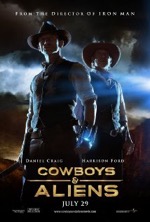
Starring: Daniel Craig
July 2011
Certainly the most original film of this summer’s panoply of big-budget blockbuster hopefuls, Western/sci-fi mash-up, Cowboys & Aliens, comes like a breath of fresh air amid the stale slate of tentpoles featuring transforming machines, wizards and superheroes. The movie’s holy trinity of director Jon Favreau and megastars Harrison Ford (Han and Indy) and Daniel Craig (Bond), pack this cinematic carbine with tremendous firepower, and boy do they deliver a rip-roaring good time.
As stellar as the two stars are, the supporting cast here is nearly as impressive. Olivia Wilde (TRON: Legacy) plays comely Ella Swenson, the film’s eye candy for teenage boys. Sam Rockwell plays the saloon owner, Keith Carradine is the town sheriff and Clancy Brown is the minister. In a similar role to the one he played in Shanghai Noon (2000), Walton Goggins (Justified) is a high-strung, trigger-happy bandit.
Other than the novelty of aliens in the Old West, there isn’t anything earth-shattering about the story. However, Cowboys & Aliens is a fanciful, farcical romp through familiar territory with a futuristic twist. The movie is a thrill-a-minute entertainment that aims at fun-filled diversion and hits the bull’s-eye.
The movie’s mash-up element might be off-putting to certain attendees—some audience members might find space aliens in their Western to be a little weird, while sci-fi fans will probably be disappointed by the paucity of the extraterrestrial element in the film. In the spirit of fairness (and because we’re in the throes of a global recession) the movie is approximately 80% Western and 20% sci-fi, so plan accordingly.
Based on a 2006 graphic novel of the same name, the movie has plenty of the prototypical conventions found in most Westerns like a solitary, rugged individual (Craig in this instance) descending a lonely hillside into a bullet-riddled town and riding off into the sunset at film’s end. The town ruffian (Paul Dano) gets in trouble with the law, requiring his cattle baron father (Ford) to bail or break him out of jail. An uneasy and unlikely partnership is forged between Craig and Ford when a common enemy threatens the town and their very existence.
But for all of the Western movie conventions utilized in the film, there are a number of unique story elements here as well. For instance, most Westerns are told in a linear fashion. Cowboys & Aliens, however, employs a series of flashbacks to fill in Craig’s mysterious abduction. The film also turns some Western film tropes on their ear, like who the “us and them” are in the story. The old adage that maintains “the enemy of my enemy is my friend” undergoes an interesting variation in the film where we have cowboys and Indians joining forces against the alien threat. If anything, this scenario certainly breathes new life into a nearly defunct genre.
Further distinguishing Cowboys & Aliens from traditional Westerns is its postmodern trappings. One of the more exciting scenes in the film is when Craig brings down an alien ship with his alien bracelet—surely a unique tableau in the expansive annals of the Old West. The scene is cathartic on two levels: 1. Good triumphing against evil (a cornerstone of classic Hollywood storytelling, the period when the bulk of Westerns were produced) is always reassuring, and 2. Craig using the alien’s technology against them is an echo of 9-11, but in reverse.
Perhaps the most un-Western element in the movie (other than the presence of aliens, of course) is the Zemeckis-esque flourishes of existentialism. In director Robert Zemeckis’ masterpiece, Forrest Gump, a languid feather drifts in and out of scenes, adding a unique visual referent as well as a purportedly deeper meaning to the events in the story. In Cowboys & Aliens, the repetitive object (or totem perhaps?) is a hummingbird. It’s not to say that hummingbirds didn’t exist during the Old West period, but they’re not the usual bird you’d associate with a Western—maybe a crow or hawk. Is Favreau tampering with the genre’s well-established iconography? With the presence of aliens in the picture, why not?
So there you have it: cinema’s first high profile Western/sci-fi hybrid with postmodern sensibilities and existential embellishments. While the movie never quite eclipses the lofty expectations placed upon it by the ubiquitous media blitz and fans of either the comic book or the movie’s A-list headliners, Cowboys & Aliens is still a wildly entertaining adventure, a quality romp that gives “popcorn movie” a good name. If nothing else, it’s just great to see Ford back in the saddle again.
Rating: 3
Sarah's Key (PG-13)
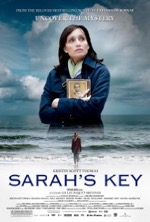
Starring: Kristin Scott Thomas
July 2011
Sarah’s Key begins as a holocaust film and quickly transforms into a decades-spanning missing person mystery. On the face of it, such a radical thematic shift would threaten to produce an uneven film and run the risk of frustrating or confusing the audience. However, Sarah’s Key is executed with such precision, and such a streamlined through line, that tonal variations merely serve as variegated patterns against which the bracing drama unfolds.
Kristin Scott Thomas plays a contemporary journalist who’s writing an article about the heinous events that took place in France on July 16, 1942—Jews living in France were ripped from their homes and shipped off to internment camps. A narrative device, employed with near-clockwork precision in the film, is the cutting back and forth between present and past, which gradually brings both timelines to meaningful intersections and resolutions. Part of the thrill of this story structure is that the audience learns clues right alongside Thomas as she continues peeling back the layers to learn the secret of one detained French family, and their courageous daughter…the eponymous ingénue.
The early stages of the film, particularly the unsanitary living conditions the Jews were forced to endure while being held captive inside a stadium, are a bit rough to watch. Still, the most graphic scene here doesn’t even come close to the horrific tableaus displayed in Schindler’s List. Even though what is suggested in the scenes is generally worse than what is actually shown, those with weaker stomachs are advised to take caution.
The mystery surrounding Sarah’s key is revealed about midway through the film and the balance of the story deals with the ramifications of Sarah’s fateful decision. Though the movie is a bit leisurely at times, the frequent trips to the past keep the story moving along, never allowing us to loose interest. However, the scenes involving Thomas’ personal life, a la her foundering marriage, serve as a detraction and distraction from the main purpose of the story and feel a bit like the earnest character moments frequently featured in Lifetime movies. The modern story here isn’t nearly as compelling as past events, a narrative condition that also plagued Nora Ephron’s Julie & Julia.
Thomas certainly can’t be faulted for the movie’s soap opera moments; she makes the most out of what she’s given. In addition to her sumptuously understated performance, Thomas deftly delivers English and French dialog in a challenging bilingual role. Appearing only in the last quarter of the film is Aidan Quinn, whose character helps Thomas assemble the puzzle of Sarah’s life. Though his screen time is limited, Quinn, like a good anchor man, really brings it home with a finely attenuated performance, fraught with nuance and genuine emotion.
Even though American audiences may only be familiar with Thomas and Quinn, the rest of the cast is rounded out by some terrific French actors. As such, roughly half the movie features French speaking with English subtitles, so fair warning for those with an aversion to foreign films. However, it’s my sincere hope that subtitles won’t dissuade potential viewers from watching this superbly crafted, acted and scripted film, which makes salient observations on the finer and baser aspects of the human condition.
Sarah’s Key illustrates how the best of intentions can have dire outcomes when waylaid by evil designs. Though frequently bittersweet, Sarah’s Key is a deeply moving film rife with profound sadness and shame over the atrocities committed against scores of innocent people. But, as the film implies more than preaches, hope can arise from the ashes of tragedy and provide a better life for future generations, so long as we never forget the lessons of the past. After all, as the film dramatically illustrates, “We’re all a product of our history.”
Rating: 3
Captain America: The First Avenger (PG-13)
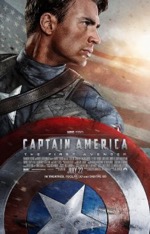
Starring: Chris Evans
July 2011
TAKING AIM:
The nationalistic hero receives big budget, big screen treatment, starring Chris Evans of the Fantastic Four franchise. But will the red, white and blue superdude fare better than that Marvel-ous quartet?
TARGET PRACTICE:
A Matter of Identification: Traditionally, the stereotypical comic book geek has been characterized as a scrawny, pimple-faced, anti-social teenage boy. The reason why many of those male teens read comic books (beyond the scantily clad superheroines) is the matter of identification—they yearn to possess super-strength, speed, intelligence, etc. In this sense, comic books become a visual panacea for angst-ridden teens (or older men attempting to recapture some semblance of their youth). The form of identification found in comic books, then, is a potent catharsis, especially when the audience is given a front row seat to the hero’s transformation—the pivotal moment of any origin story.
Transformation Comparison: The transformation story structure worked like a charm in Spider-Man (2002) and, for the most part, it works well here too. Peter Parker (Spider-Man) and Steve Rogers (Captain America) both experience a dramatic uptick in strength, speed and agility after the transformational event in their origin tales: Parker is bitten by a mutant spider while Rogers undergoes a government experiment. However, while Parker merely sees an increase in bicep size, Rogers emerges from the mechanical cocoon, which is part of a top-secret military initiative to create super soldiers, as a fully fledged beefcake (with his shirt off, of course). Whereas most of the aforementioned teenage males would gladly accept Spidey’s superpowers, I’m confident that all of them would want Rogers’ physique, which makes his transformation all the more resonant for the comic book set.
Oh, What Webs We Weave: Surprise, this section isn’t about Spider-Man! It’s actually a play on words regarding the movie’s villain… Hugo Weaving, he of the Matrix and The Lord of the Rings trilogies, is a fine actor and actually doesn’t go too far over the top here as Nazi henchman Johann Schmidt. However, one of the goofier elements of the movie is the Red Skull prosthetic/make-up, which in no way resembles Weaving’s facial structure. I understand that Red Skull had to be in the movie, to appease comic purists, but this is one of those instances where strict adherence to the comic undermines the writers’/producers’ efforts to have us buy into the “reality” of their story. Weaving is a much more convincing villain without the hokey vermillion mask.
The Other Guys: Tommy Lee Jones was the perfect choice to play crusty Col. Chester Phillips, but he brings nothing to his role beyond what you’d expect. Stanley Tucci is memorable as Dr. Abraham Erskine and Hayley Atwell is Rogers’ cute-as-a-button love interest, Peggy Carter. There are plenty of secondary characters in the movie and one of the standout parts is handlebar mustached mercenary, Timothy “Dum Dum” Dugan (Neal McDonough). Something about Dugan’s gung-ho demeanor makes for amusing and captivating viewing, much like David Graf’s Sgt. Tackleberry in the Police Academy films. You’ve gotta’ love characters whose sole function in a film is to be a blunt force weapon.
Imitating Art: Before becoming famous as Cdr. Riker on Star Trek: The Next Generation, Jonathan Frakes impersonated Captain America at a mall for meager pay. Here, Rogers tries rallying the troops on a European tour as Captain America—the mascot, not the superhero. Rogers wants to be on the battlefield, but despite his incredible speed and strength, the military feels he can do more to advance the war effort on stage instead of on the front lines. What’s that old oxymoron…military intelligence? These scenes humanize Rogers to the degree that we almost want to stand up and cheer when Captain America finally takes the European theater by storm, singlehandedly turning the tide of the war. What better way to insure that an audience is sympathetic toward a character than to inject a healthy dose of pathos concerning the hero’s plight?
PARTING SHOTS:
All in all, Captain America is a middling comic-to-cinema effort, but you could do far worse…like Evans’ earlier superhero films. Now that the table has been set by Marvel mainstays Iron Man, The Hulk, Thor and now Captain America…bring on The Avengers!
Rating: 2 1/2
Cars 2 (G)
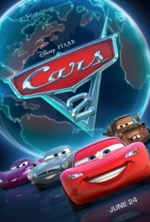
Starring: Owen Wilson
June 2011
Celebrating 25 years of animation excellence, Pixar Studios has never released a dud—a truly astounding achievement. In fact, the closest they’ve ever come to producing a flop was the commercially successful but critically tepid Cars (2005). So then, why would the studio green-light a sequel to the worst received film in its catalog rather than its most successful—you know, the one with the clown fish?
The easy answer is marketing—Cars merchandise is everywhere…on clothing and pillow cases, on cracker boxes and soup labels and especially on shelves in the toy aisle. Cars paraphernalia is ubiquitous and the drop in sales since the first film exited theaters is negligible to the point of imperceptibility. Sad to say, but as long as the marketing machine is at full throttle, even mediocre box office returns from any future sequels will still be considered a success.
So with nothing to loose and bank to make, Lasseter and Co. have reunited us with Lightning McQueen (Owen Wilson) and Mater (Larry the Cable Guy) and a host of new and returning characters (all of which, you can bet, will have at least one toy car manufactured in their likeness) in Cars 2. Leaving behind the cozy confines of Radiator Springs, the story soon takes us on a globetrotting adventure that’s part racing film and part Bond-esque spy thriller where Mater is mistaken for an undercover agent (huh?). The action kicks into high gear when the characters are whisked away on a foreign tour for the World Grand Prix.
The film’s premise seems like a sure-fire winner, but large sections of the film just feel off—like the timing of a car in desperate need of a tune-up. One key contributor to this cinematic vapor lock is the inner-cutting between the race and espionage subplot. The actual race is upstaged and overshadowed by the international intrigue for most of the film, making it difficult to actually enjoy or even care about the race itself, which becomes ancillary to the spy action sequences. This narrative tug o’ war is tiring and jarring. Further, McQueen plays second horn to Mater for most of the movie (notice that Larry has top billing over Owen in the end credits).
The espionage plot itself is intended as a nod to the James Bond and Mission: Impossible franchises, but unwittingly degenerates into a derivative spoof. Michael Caine is predictably masterful as mega-spy Finn McMissile and probably should’ve had his own film. In the same way that the spy plot dominates the racing plot, McMissile is more of a hero in the film than McQueen. Has the “Mc” mantle been passed on for the next, inevitable sequel?
The movie’s commentary on oil vs. a fuel alternative (Allinol) is by turns heavy-handed and OPEC, I mean opaque, and ultimately fails to say anything meaningful on the subject. Monsters Inc. subtly addressed the energy crisis of the early 2000s while WALL-E harrowingly forecasted the dangers of consumerism run amok. By contrast, Cars 2 breaches the topic of our dependency on fossil fuels and then quickly abandons it, hit-and-run style.
Equally irritating is the film’s vacillation with respect to lemon cars—one minute we’re supposed to pity them, like Mater’s rust bucket fan, Otis, and the next we’re supposed to despise them, like the nefarious henchmen who “kill” cars because they’re rich and famous. Even when confronted with the error of their ways, the Lemon Mafia refuses to change, much to their demise. Unrepentant evil is pretty rare in Pixar movies (Syndrome is one notable exception), and sets a poor example and precedent, especially since the plight of lemon cars could’ve set up a heartfelt moral—you know, the kind Pixar normally capitalizes on for maximum emotional effect. The only meaningful moment here is the analogy between dents and momentous events of the past, a very understated theme that Lasseter should’ve gotten more dramatic mileage out of.
So, has Cars 2 broken Pixar’s perfect track record? Opinions will vary, but there can be no doubt that if fails to measure up to the studio’s stellar back catalog. The movie mishandles nearly every narrative turn and takes the original conceit of talking cars (and now ships, jets, trains, etc) to absurd extents. As such, the film has effectively scrapped credibility while abandoning the heartwarming character moments that aided in our suspension of disbelief during the first outing.
In one of the movie’s rare racing scenes, McQueen moves outside and allows chief rival Francesco Bernoulli to take the inside track to victory. In the same way, Cars 2 has pulled over onto the shoulder, allowing any other decent animated film the chance to play spoiler in this year’s race for the Best Animated Feature Oscar. There’s always the Piston Cup as a consolation prize, I suppose. As painful as it is to admit, Pixar has fallen off the pace.
Rating: 2
Kung Fu Panda 2 (PG)
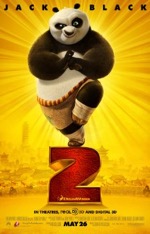
Starring: Jack Black
May 2011
TAKING AIM:
Black is back as panda Po, but does the sequel have the same disarming charm or killer action sequences as the original?
TARGET PRACTICE:
All-Star Cast: Voice talents abound in the Panda sequel. Notable returning characters are: Po (Jack Black), Tigress (Angelina Jolie), Shifu (Dustin Hoffman), Monkey (Jackie Chan), Mantis (Seth Rogen), Viper (Lucy Liu), Crane (David Cross) and Mr. Ping (James Hong). New characters include: Shen (Gary Oldman), Soothsayer (Michelle Yeoh), Wolf Boss (Danny McBride), Master Ox (Dennis Haysbert), Master Croc (Jean-Claude Van Damme) and Master Rhino (Victor Garber).
Family Matters: The narrated prologue sets up one of the movie’s major plots…the mystery surrounding the fate of Po’s parents. Midway through the film, Po confesses to Tigress his surprise over discovering that his father, a goose, isn’t his “real” father. The hilarity of the scene soon turns to a serious, heart-rending plea to know “Who am I?” Po gradually learns the answer to his question during intermittent flashbacks throughout the movie and during the climactic confrontation with the new villain.
Artful Art: Speaking of the flashback sequences, the use of various animation styles makes for a very effective means of storytelling. The opening sequence, which tells the back story of how peacock Shen turns bad, is a superbly crafted teaser that’s animated in the style of a Chinese shadow puppet show. That style is repeated later in the film, but most of the remaining flashback scenes employ traditional animation and one flashback is rendered in CGI.
Irrational Fears: One of the movie’s plot elements involves the impending demise of kung fu at the hands of a new mystery weapon. We’ve seen this scenario played out many, many times in cinema history, ranging from the emergence of the Gatling gun threatening to put gunfighters out of business in John Wayne’s The War Wagon (1967) to the very same weapon making swords, guns and martial arts obsolete in Shanghai Knights (2003) and putting samurai warriors out of business in The Last Samurai (2003). What makes this fear an irrational one, and therefore a flawed plot device, is that kung fu, as a mode of hand-to-hand combat, serves an entirely different function than that of a weapon of mass destruction. In other words, someone with no fighting skills can wreak havoc by pulling a trigger, but that same person would get his butt kicked by someone trained in physical combat. Therefore, a WMD threatening a form of martial arts is a wholly fallacious premise.
Inner Peace: Po, who tends to be uncoordinated, unfocused and undisciplined, is given a new challenge this outing, finding inner peace amid the swirling maelstrom of random thoughts and nagging questions in his mind. Master Shifu, the series’ version of Yoda or Miyagi, appears just long enough to give Po his assignment but, disappointingly, doesn’t really factor into the story except for a deus ex machina appearance during the climactic melee. Though this theme is a bit force-fed, inner peace ties in nicely with Po’s struggle to learn his true identity and is also critical in Po’s efforts to turn the tide against the advancing evil at movie’s end.
PARTING SHOTS:
So is the sequel as good as the original? Not quite. The Panda sequel only possesses half the charm and half the heart as the original. Other than panda protagonist and peacock antagonist, none of the other critters get much character development, if any at all. Oh, and speaking of the villain…a peacock? Really? Wouldn’t it have made more sense to make the one-eyed wolf the villain? Just saying. The action sequences are well-executed, but offer little innovation from the dynamic fight scenes featured in the first film. Still, some things do work well in the sequel, like the humorous “stealth mode” and “dragon costume” sequences, the heart-warming scenes between Po and his adopted father and Po’s refusal to allow his painful past to dictate his present and future. So, will we see Po and co. again in the near future? The movie’s clever coda should leave no doubt.
Rating: 2 1/2
Source Code (PG-13)
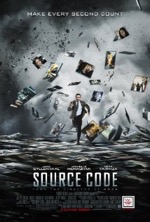
Starring: Jake Gyllenhaal
April 2011
Too soon on the heels of Inception (2010) or The Adjustment Bureau (2011)? Perhaps, but director Duncan Jones’ (Moon) Source Code is more derivative of TV series than heady, mind-trip flicks.
Exhibit A: Quantum Leap (1989-1993). Scott Bakula’s Sam Beckett leapt into different people (and the occasional space chimp) on a weekly basis to rectify some past wrong. In order to identify what person he was impersonating, all Sam had to do was look in the mirror—a concept that Source Code exploits early in its narrative.
Exhibit B: Seven Days (1998-2001) a lesser known UPN sci-fi series centered on the exploits of Frank Parker (Jonathan LaPaglia), a Navy captain who is sent back in time seven days (in Source Code it’s a breezy eight minutes) before a major catastrophe in order to avert it. Source Code borrows liberally from the premise and trappings behind Seven Days, right down to the military officer as the central character, a dubious space/time apparatus and multiple jumps backwards and forwards through time.
Exhibit C: 24 (2001-2010) Counter-terrorist agent Jack Bauer (Kiefer Sutherland) must thwart terrorist plots designed to cripple or nation in a perpetual race against time. Since Source Code deals with acts of terrorism in metropolitan areas, specifically a bomb on the train, we can also cite 24 as a possible antecedent to Jones’ shifty/trippy yarn.
Jones’ direction is taut, especially his stylistic flourishes to signify time travel and time compressed montages for less significant loops, and the performances are solid across the board (although Gyllenhaal and Monaghan’s foisted romance is a bit saccharine and Jeffrey Wright’s attempts at channeling a techno-babbling scientist are less than stellar). The movie fails to soar due to the myriad contrivances upon which its premise and story are based. Even the concept of learning more clues with each new perspective is reminiscent of Vantage Point (2008), which was heavily influenced by Kurosawa’s Rashomon (1951).
The conceit of a time traveler stuck in a causality loop has been explored ad nauseam in the sci-fi pantheon and, unfortunately, Source Code adds very few new riffs on the formula. The only innovation here is Jones’ opaque coda, which will leave at least half the audience scratching their heads as they exit the theater (I’m pretty sure I get it, but I’m not one hundred percent sure myself). The plot was satisfactorily concluded about fifteen minutes from the end, so why did the movie overstay its welcome? Jones’ parting shot is counterintuitive in that it risks confusing a significant segment of the audience over a mind-bending “ah-ha” denouement that could’ve just as easily been left on the cutting room floor. If you get the film’s conclusion, good for you; if not, join the club.
You’ve seen it all before, but maybe Source Code’s fresh faces and unique assemblage of standard plot devices will keep you entertained. I’ve got to admit that I had high hopes for this one, but in the end, Source Code is largely a waste of time.
Rating: 2 1/2
Rango (PG)
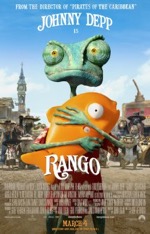
Starring: Johnny Depp
March 2011
With the creative vision of director Gore Verbinski (The Pirates of the Caribbean: The Curse of the Black Pearl) and the hard-hitting prose of screenwriter John Logan (Gladiator), you’d expect a stylish, edgy and pulse-pounding adventure for Nickelodeon’s new animated foray into the Old West, Rango. As is the case with many movies these days, what looks good on paper doesn’t always translate successfully onscreen. Even though Rango is far from being a bomb it doesn’t exactly hit the target either. It’s diverting without necessarily being inspiring or entertaining.
Everything is going swimmingly for the titular chameleon (voiced by Johnny Depp), who’s enjoying some RNR in the back of his owner’s car. As fate would have it, Rango’s glass habitat slips though a car window and he soon finds himself alone and lost in the middle of a desert. As a pampered house pet, Rango must now learn how to survive in the wild with very few life skills to draw upon.
This setup is similar to the opening act of Pixar’s Cars, when hotshot race car Lightning McQueen (Owen Wilson) wakes up in the middle of the desert and stumbles into sleepy burg, Radiator Springs. Here, Rango ends up in the Wild West town of Dirt, and it just so happens that the citizens are looking for a new sheriff. Hesitant at first, Rango eventually accedes to the demands of the townsfolk when the chance to be a hero becomes too great an enticement to resist.
Although Rango is a pastiche of many different films, it has a heavy quotation of Chinatown, which becomes blatantly obvious from the midway point on through to movie’s contrived resolution. At the very least, Logan should’ve selected some other element than water to have a shortage of since H2O was such a central commodity in Roman Polanski’s landmark film. In addition to being a Chinatown retread, the movie also features characters from other movies, like the off kilter cameo of a rugged figure called the Spirit of the West (voiced by Timothy Olyphant), a clear-cut analog of Clint Eastwood’s “Man With No Name” from the Sergio Leone’s spaghetti western trilogy. The spirit of Eastwood gives the chameleon hero some words of advice while sweeping the desert floor with a metal detector. It’s a strange flourish that one would expect to see in a movie helmed by Depp’s other director friend, Tim Burton.
Despite it’s best efforts at being topical, by tapping into recession fears, Rango falls short of being relevant due to the story’s pervasive silliness. Still, there are some mildly amusing scenes and a few creative embellishments, like the rattlesnake with a semi-automatic gun in its tail, that make the movie a worthwhile entertainment. The movie’s underlying message, that anyone can be a hero if they try hard enough, is a bit overdetermined, but is heartwarming just the same. After all, don’t we all secretly wish we could be a hero?
Rating: 2 1/2
The Adjustment Bureau (PG-13)
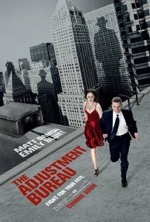
Starring: Matt Damon
March 2011
TAKING AIM:
The Adjustment Bureau presents an intriguing premise: what if agents from a secret organization aggressively enforced the rigid adherence to the master plan set forth for a person’s life? This Matt Damon vehicle is a high concept thriller that successfully synthesizes elements from an action flick and a love story, while also traversing some heady, philosophical terrain.
TARGET PRACTICE:
Novel Fact: Adjustment is the latest in the decades-spanning string of movies based upon Philip K. Dick’s sci-fi stories (Blade Runner, Minority Report, etc).
Genre Blender: Though containing elements of a romance, drama, thriller, action and sci-fi film, Adjustment stubbornly resists genre classification, and represents the best parts of each in its mash-up mélange of narrative flavors.
Pervasive Paranoia: Harking back to the widespread suspicion of men in gray flannel suits (think Gregory Peck) during the early stages of the Cold War, Adjustment keenly displaces onto its gray-suited Bureau agents the current and widespread anxieties over lost freedoms (the Patriot Act) and growing distrust of the system (corporate and political corruption). The more things change…
Chemistry: Damon, by now, is unquestionably a bona fide Hollywood leading man. Blunt has spent her career as a sidekick in supporting roles. On paper, Damon and Blunt seem mismatched. Onscreen, the chemistry between the two actors is debatable and, as such, Blunt’s casting is dubious when considering the wealth of A-tier actresses who could’ve, perhaps should’ve, taken her place. One thing’s for sure, the Damon/Blunt pairing doesn’t hold a Bic lighter to the enduring flame of classic romantic couples like Bogart/Bacall and Tracy/Hepburn.
Philosophy: The philosophical topic of fate/chance is broached with conspicuous frequency in the film. The story also grapples with the theological debate over predestination vs. free will. The cerebral lectures on fate are less intriguing here than the gut-wrenching ramifications of making the wrong decision when the future is on the line. What if your action, or inaction, holds negative outcomes for your future self (we saw this illustrated ad nauseam in the Back to the Future trilogy)? Even worse, what if your decision creates catastrophic repercussions for someone you love? Could you set aside your love for that person if it meant ensuring his/her well being, which would otherwise be jeopardized? It’s all hypothetical when couched in a two hour entertainment, but it’s still fun to noodle over.
Digging Deeper: The movie contains some breathtaking views of NYC’s skyscrapers, especially the monolithic corporate buildings, which are artfully framed in the downtown scenes. Also, the film makes effective use of expansive rooms (lobbies, libraries, etc), which, by comparison, make its inhabitants appear like a jellyfish in a gigantic ocean. And speaking of oceans, there’s a fascinating connection between this film and Titanic. In Titanic, good things generally happen at the front of the ship, while bad things usually happen at the back of the ship. Here, large rooms (e.g., empty warehouses) are bad and small rooms (e.g., bathrooms) are good. Another point to consider: the one young black man in the Bureau is characterized as open-minded, flexible and a Good Samaritan, while the numerous old Caucasian men are drawn as rigid, unimaginative enforcers of policies even they question at times. What does this say about the ethnic diversity among the leaders of the emerging global economy? Is the movie prefiguring the impending extinction of the old guard of corporate America? Also, why does the movie succumb to the prevalent “boy’s club” mentality? The Bureau consists entirely of men.
PARTING SHOTS:
Though the movie attempts to tackle some weighty aspects of our existence, are the excessive references to free will a bit overdetermined? If so, is the conclusion too preachy? Is the existential dénouement a cop out (i.e., Back to the Future IIIs sage advice from Dr. Brown, “Your future is whatever you make it. So make it a good one…”)? Even though it’s currently in fashion (especially on TV), did we really need Damon’s voiceover narration to help us interpret his character’s thoughts and feelings?
In the final analysis, Adjustment is a cinematic double-edged sword. Those hoping to see an all-out action, or drama, or romance, or sci-fi film are sure to be disappointed. Still, since it offers something for everyone, Adjustment is sure to reach a wider audience than if it had focused on just one specific genre. Either way, if the film makes people ponder its themes and messages past the exit sign, it will have accomplished it purpose.
Rating: 3
The Chronicles of Narnia: The Voyage of the Dawn Treader (PG)
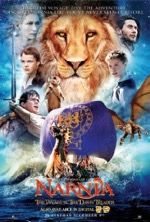
Starring: Ben Barnes
December 2010
“Third Journey to Narnia Fails to Showcase the Book’s Unbridled Creativity”
I know I’m not alone in my conviction that the third book in C.S. Lewis’ Chronicles of Narnia series, The Voyage of the Dawn Treader, is the finest in the seven book fantasy cycle. I temper my less than flattering comments about the movie adaptation of Lewis’ novel, directed by Michael Apted (Amazing Grace), with the knowledge that my expectations of the film were, admittedly, far too lofty. That said, Dawn Treader is a remarkably, inexplicably un-magical journey into Lewis’ enchanted realm. Although each book bursts with charm and imagination, it can be argued that Dawn Treader represents a high watermark for Lewis, who had clearly hit his creative stride at this point in the Narnia series.
Opinions may vary as to what went wrong with the movie, but for my money the film suffers from a tension between narrative polarities; the story hews too closely to the original source material in some instances and takes too many liberties with original story details and structure in others. Most noticeable to viewers who’ve read the book is the movie’s juggling act with major events in the story—the encounter with the Dufflepuds comes much earlier and Eustace’s (the perfectly cast Will Poulter) transformation into a dragon comes much later in the film version. The natural byproduct of this scrambled structure, besides overriding the author’s original intentions for the story, is an uneven narrative that feels more like choppy waters than smooth sailing.
While the Dufflepuds, disappointingly, only appear for about two minutes in the film (the single element I most wanted to see in the movie), Eustace, who remains a dragon much longer in the film version, factors more significantly into the story’s climax. Although some story alterations work better than others (Good: collecting the seven swords from the seven lords, Bad: a thought-generated sea serpent that looks like it was borrowed from the Pirates of the Caribbean franchise), such embellishments, like the extraneous It’s a Wonderful Life styled scene with Edmund (Skandar Keynes), Peter (William Moseley) and Susan (Anna Popplewell), weren’t the movie’s biggest creative liability. Ultimately, what draws the Dawn Treader off course, as ironic as it sounds, is pacing. Apted and company bring so much admiration and zeal to the project that their enthusiasm creates the narrative equivalent of a runaway train. And we all know the demise of runaway trains.
So, now that the Narnia books featuring the Pevensie children have found their way to the big screen, will we see the final four books in Lewis’ series (which largely exclude the Pevensie’s) adapted for the big screen? I supposed the better question is whether or not this effort has warranted the production of future films in the series. Unlike the hugely successful Harry Potter and Lord of the Rings fantasy franchises, the quality of the Narnia film series has decreased with each new release.
As such, it now seems doubtful that The Silver Chair, The Horse and His Boy, The Magician’s Nephew or The Last Battle will ever be translated into motion pictures. As for The Horse and His Boy, whether or not we ever get to see it realized as a feature film, at least we have Albert Lamorisse’s brilliant White Mane (1953) to fill that cinematic niche. Though only forty minutes in length, Lamorisse’s touching tale of a special and sacrificial friendship between a boy and his horse has more magic than Dawn Treader has in its entirety. Worth a watch!
Rating: 2 1/2
The Ghost Writer (PG-13)
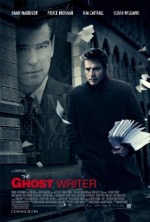
Starring: Ewan McGregor
March 2010
“Polanski’s Political Potboiler Stars a Superspy and a Jedi”
Roman Polanski’s The Ghost Writer, though not as shocking as Chinatown or as haunting as The Pianist, is a fine film in its own right, a taut thriller told from the epicenter of a political earthquake. At the center of the epicenter is Adam Lang (Pierce Brosnan), former Prime Minister of Britain, who’s been accused of advancing American policies while he was in office. The revolving door of ghost writers commissioned to massage Lang’s memoir into printable form soon sweeps a young and ambitious scribe, simply referred to as The Ghost (Ewan McGregor), into the web of intrigue and controversy that seems to surround Lang wherever he goes: Lang ping-pongs back and forth between native England and the eastern seaboard of the US.
We enter Lang’s world as an interloper, a voyeuristic onlooker to the drama that unfolds around Lang and those in his orbit. Lang, though understandably and undeniably aristocratic in public, is much more subdued behind closed doors, especially in one-on-one interviews with The Ghost. Past the officious exterior, Lang, when finally able to lay aside the worries of the world, displays a degree of vulnerability that’s a bit unsettling at first. It’s an expertly measured performance by Brosnan, a career actor with an inestimable range (Lang is a light-year from Bond).
McGregor also turns in a fine performance that’s deceptively understated in its fly-on-the-wall subtlety. Even though Lang is sympathetic and central to the plot, the audience identifies more strongly with The Ghost since he’s brought into the political turmoil at the same time that we are. As The Ghost forms his opinions of Lang, we’re right there peeking over his shoulder, sensing, as he does, that something isn’t quite right in Lang’s world.
The Ghost’s expressions of confusion, suspicion and apprehension are mirrored on our faces: in this way, director and writers see to it that character and audience are on equal footing. Or perhaps Polanski is deluding the audience into a state of false confidence. Perhaps The Ghost is one step ahead of us and the only reason we’re clued in at all is because his writer’s eye is leading our gaze to details we would normally miss. Either way, this narrative choice allows for tangible tension to reign supreme throughout the story…and we can be grateful in our consternation since the movie’s intricate web of intrigue ensures a more satisfying viewing experience than a paint-by-numbers puzzler.
Of course, keeping the audience in the dark and methodically parsing out plot details at a pace which produces maximum suspense is a staple of the thriller genre, and few do modern-day political potboilers better than Polanski. Polanski knows how to gradually build anticipation until…bang, some major character revelation or unforeseen event causes a rupture in the story’s stasis. Even though the action never reaches the fevered pitch of a Bourne movie, there are some nail-biting episodes like when The Ghost takes a trip on a ferry boat and discovers that he’s being shadowed.
Though the film’s intensity ebbs and flows (like the undulating ocean waves visible through the window in Lang’s office), an undercurrent of dread is ubiquitous, like apprehensions over the impending storm. The literal storm that’s been brewing since the movie’s early stages finally hits midway through, just as several character arcs are reaching their breaking points. The storm scene, of course, is symbolic of what the characters are experiencing. What would’ve come across as telegraphed by a lesser director is artistically and organically achieved by Polanski, whose expert grasp of storytelling allows for a slow boil approach to these climactic events.
The movie’s East Coast locales serve as an additional, though non-corporeal, member of the cast. The visual splendor Polanski creates, with the assistance of cinematographer Pawel Edelman, is nearly palpable. The overcast, blustery shoreline scenes along Martha’s Vineyard (surprisingly shot in Germany) are visually immersive and are the perfect accompaniment for the movie’s melancholy mood. The scene where McGregor bikes over to Eli Wallach’s house, the expanse of gray and beige creating a haunting yet beautiful tableau all around him, has more atmosphere than many movies have in their entirety.
One of the film’s many highlights is the showdown interview between The Ghost and Paul Emmett (Tom Wilkinson). Few actors can lace pleasantries with napalm like Wilkinson; his character’s thinly veiled disdain for The Ghost boils just beneath the surface of his composed and professional demeanor. Besides containing some tense, hair-raising dialog, the verbal sparring match between Wilkinson and McGregor sets into motion a chain reaction that ultimately leads to The Ghost’s untimely demise: if you’ve seen any of Polanski’s back catalog you can make an educated guess at the nature of the film’s down ending.
Although The Ghost Writer fails to measure up to Polanski’s earlier masterpieces, it’s still a taut yarn with fine performances and a riveting riddle that will keep the audience guessing right up until the bitter end. And let’s face it, a lesser Polanski film is still better than the vast majority of films Hollywood is turning out these days. There’s little intrigue in that statement.
Rating: 3
Alice in Wonderland (PG-13)
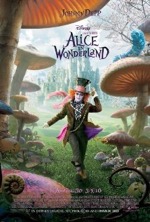
Starring: Johnny Depp
March 2010
“Burton’s Timing and Creative Vision are Off in Wonderland”
Alice is in the most unenviable position imaginable…she’s at her own engagement party and has a revulsion to her husband-to-be. A crowd has assembled to witness the momentous occasion and, much to Alice’s horror, her homely suitor drops to one knee and pops the question. Feeling the radiant heat of a hundred expectant gazes burning holes into her face, Alice does what any sane person would do—she flees the vicinity; leaving her would-be fiancé and accompanying crowd in a stupefied trance.
While pouting near a hollowed out tree, Alice hears noises from inside the tree and bends over to take a look. The ground gives way and Alice falls, falls, falls down a surreal tunnel filled with obstacles like chairs, pictures and a grand piano. Once through a magical door, Alice finds herself in Wonderland, but after taking one look at the dismal and drab alternate realm, I’m sure the blonde debutante is prepared to accept her fate and take her chances topside with rodent boy.
And so begins Tim Burton’s Alice in Wonderland (2010), based on Lewis Carroll’s children’s masterpieces Alice’s Adventures in Wonderland and Through the Looking-Glass, which is utterly uninteresting, as incredulous as that sounds. Despite its surfeit of vision, Wonderland is disappointingly bereft of heart. Johnny Depp’s performance as the walleyed Mad Hatter is unsettlingly askew, though not nearly as creepy as his portrayal of Willy Wonka in Burton’s other film about the chocolate factory. Helena Bonham Carter’s turn as the Red Queen is serviceable though not nearly as blood-chilling as it could or should have been. Newcomer Mia Wasikowska is acceptable as Alice, but Ann Hathaway is horrendous as the White Queen: Hathaway tries too hard to appear regal and glides along with her hands in the air as if in a perpetual waltz.
However, what debilitates this iteration of Wonderland isn’t the acting or directing or even the sometimes bearable other times insufferable special effects, but that most capricious of commodities…timing. If Wonderland had been released six months ago it would’ve blended in seamlessly with the concurrent sci-fi/fantasy films and Burton would’ve received well-deserved kudos for yet another frenetic and fantastical fiat of fractured-reality filmmaking. As things stand, Wonderland is the first in what is certain to be a long succession of CGI films that will fail to measure up to James Cameron’s Avatar (2009) and will be harshly, perhaps unfairly in some instances, judged for their technological shortcomings. When compared to Avatar’s special effects, Wonderland’s CGI is like a secondhand account of a rumor based on yesterday’s news. That is to say, due to the painfully obvious disparity in CGI quality between both films, Wonderland looks like it predates Avatar by at least a year even though it’s the newer film.
In reality, it might be a while, perhaps a year or more, before the average effects picture reaches the technological proficiency achieved by Avatar. Armed with that knowledge, why did Burton opt for a mixture of live action and CG characters instead of an all-out F/X film? Burton’s choice, in twenty-twenty retrospect, would appear to be ill-advised since the resultant mixture of live-action and CGI is strangely uneven and ineffably odd, but not the kind of odd you’d normally associate with Carroll’s classic or Burton’s oft-deranged sensibilities.
The full-on CGI rendering of The Cheshire Cat (voiced by Stephen Fry) works quite nicely in the film, especially when the teleporting feline de- and re-materializes with enough frequency to give spectators a mild whiplash. In contrast, the bulbous heads of the Red Queen, Tweedledee and Tweedledum (Matt Lucas), which look like they were achieved by shooting into one of those silly carnival mirrors, are bizarre even by Burton’s standards. One wonders if Cameron’s mocap wouldn’t have been a better option for the queen and her two tweedles.
Borrowing from Carroll’s “Jabberwocky” poem in Through the Looking-Glass, Alice, in order to fulfill a prophecy, must slay the dreaded Jabberwocky…which turns out to be your standard-issue dragon. The Jabberwocky (voiced with the appropriate degree of malevolence by Christopher Lee) appears to be a repainted and rescaled version of the barely adequate fire-breather at the end of Enchanted, another fantasy-themed Disney film released in 2007. Instead of looking to Enchanted for inspiration, Burton’s F/X team should’ve used the impressively rendered dragon in Harry Potter and the Goblet of Fire (2005) as their touchstone. Believe me, when I say the Jabberwocky is a sorry excuse for a dragon I’m not just blowing smoke.
The climactic battle between the Red Queen’s life-size metallic playing card soldiers and the White Queen’s chess piece army is conspicuously brief for a presumably epic confrontation and is frequently upstaged by Alice’s crenellation-hopping duel with the Jabberwocky. The battle, which is visually interesting only because it takes place on a gigantic chessboard, tries to recreate the feverish, pulse-pounding, armor-clanging melees which were executed with preponderant verve, artistry and lyricism in The Lord of the Rings trilogy, but ends up looking like a cheap knockoff of a Chronicles of Narnia film. Ultimately, the final confrontation’s brevity is a blessing in disguise…the CG veneer is stripped bare long before the Hatter launches into his inane victory jig.
The three fantasy franchises referenced above (Rings, Potter and Narnia) clearly illustrate another instance of Wonderland’s poor timing. Though fantasy films have managed to retain their commercial viability over the past decade, genre conventions and iconography have been so well-established by now that all but the most superlative examples of the form are exposed as reheated epics or, worse still, derivative remakes. Having borrowed so liberally from other fantasy series’, Wonderland comes off as routine and safe…like most adapted screenplays in Hollywood these days.
So where’s the wonder in this Wonderland? The curiosity? The levity? Burton’s conception of the titular destination, perhaps not surprisingly, is a dystopian wasteland—a post-apocalyptic acid trip that stands in stark opposition to Carroll’s whimsical, joyful fantasy land. In light of the current global recession, Burton’s timing would seem to be off yet again: right now we need ennobling, encouraging, reassuring fare not yet another bleak and vapid depiction of fractured identities in the postmodern era. It’s too bad Burton didn’t listen to his White Rabbit: the frenzied, furry fellow was trying to tell him all along that he was too late.
Rating: 2 1/2